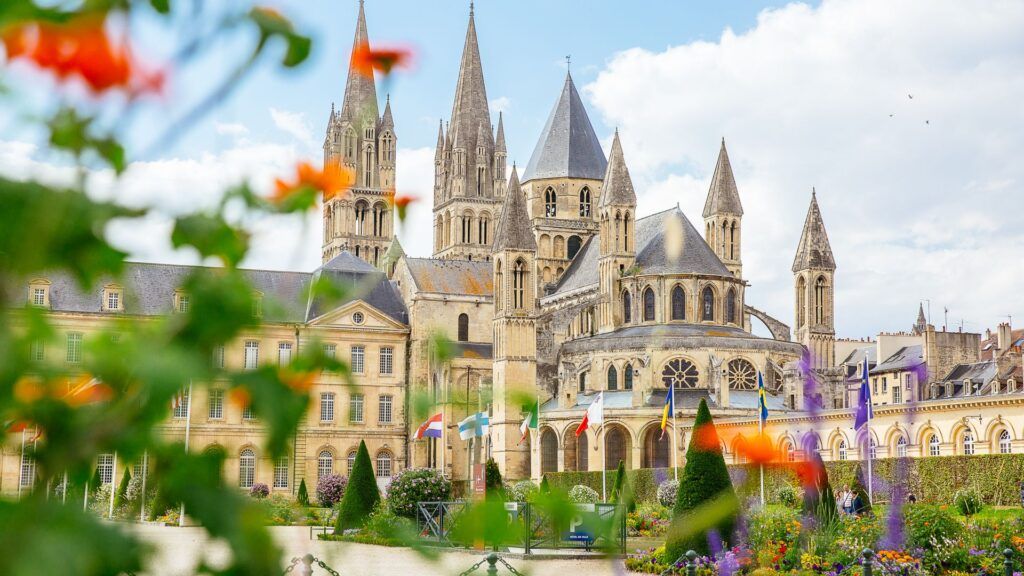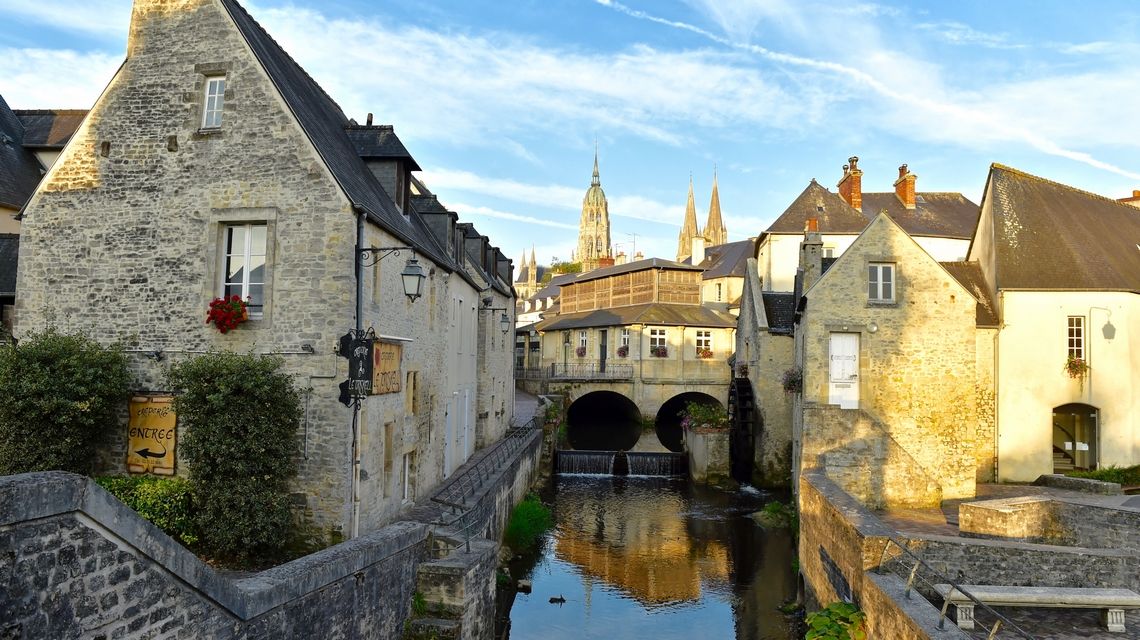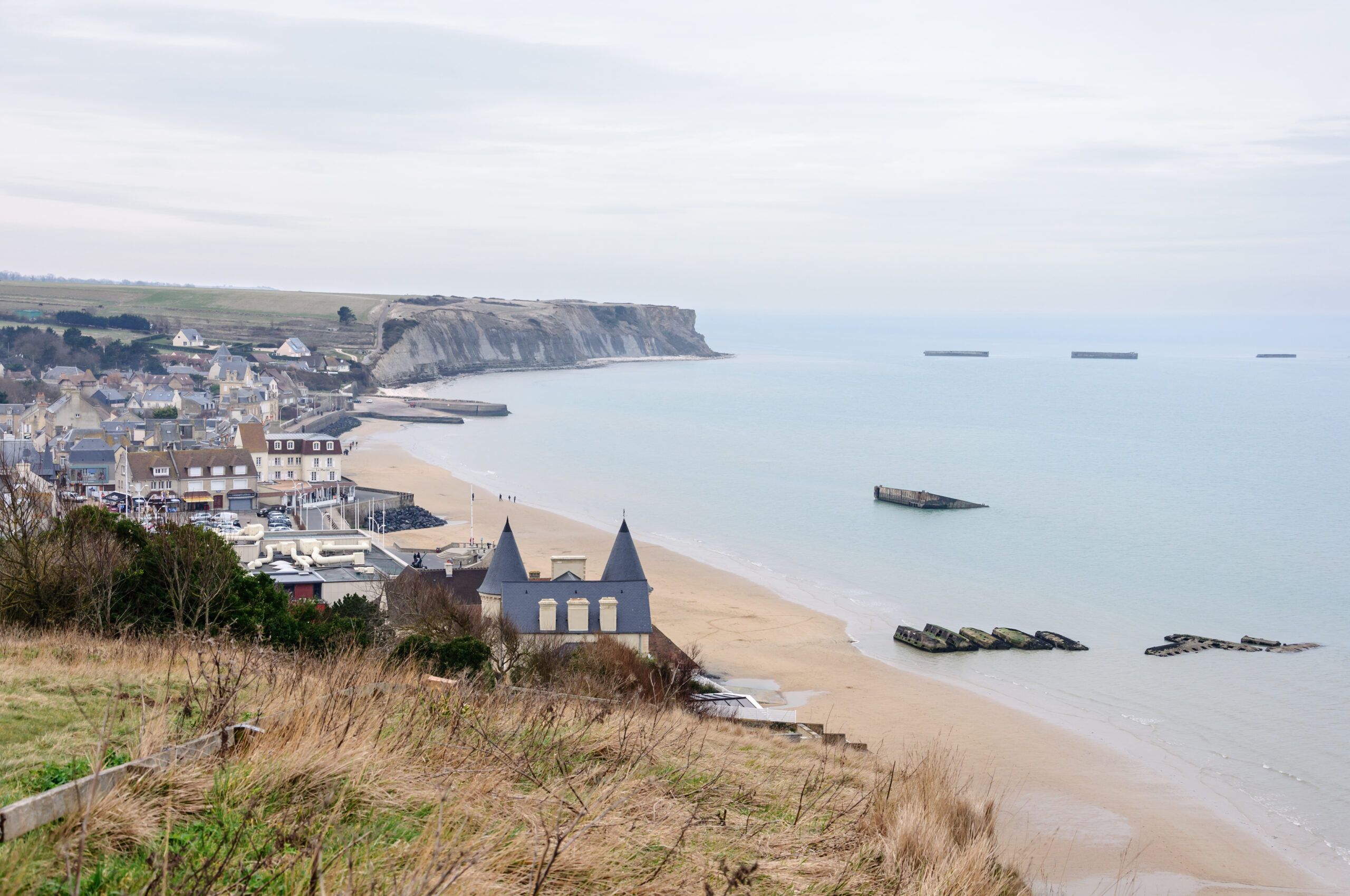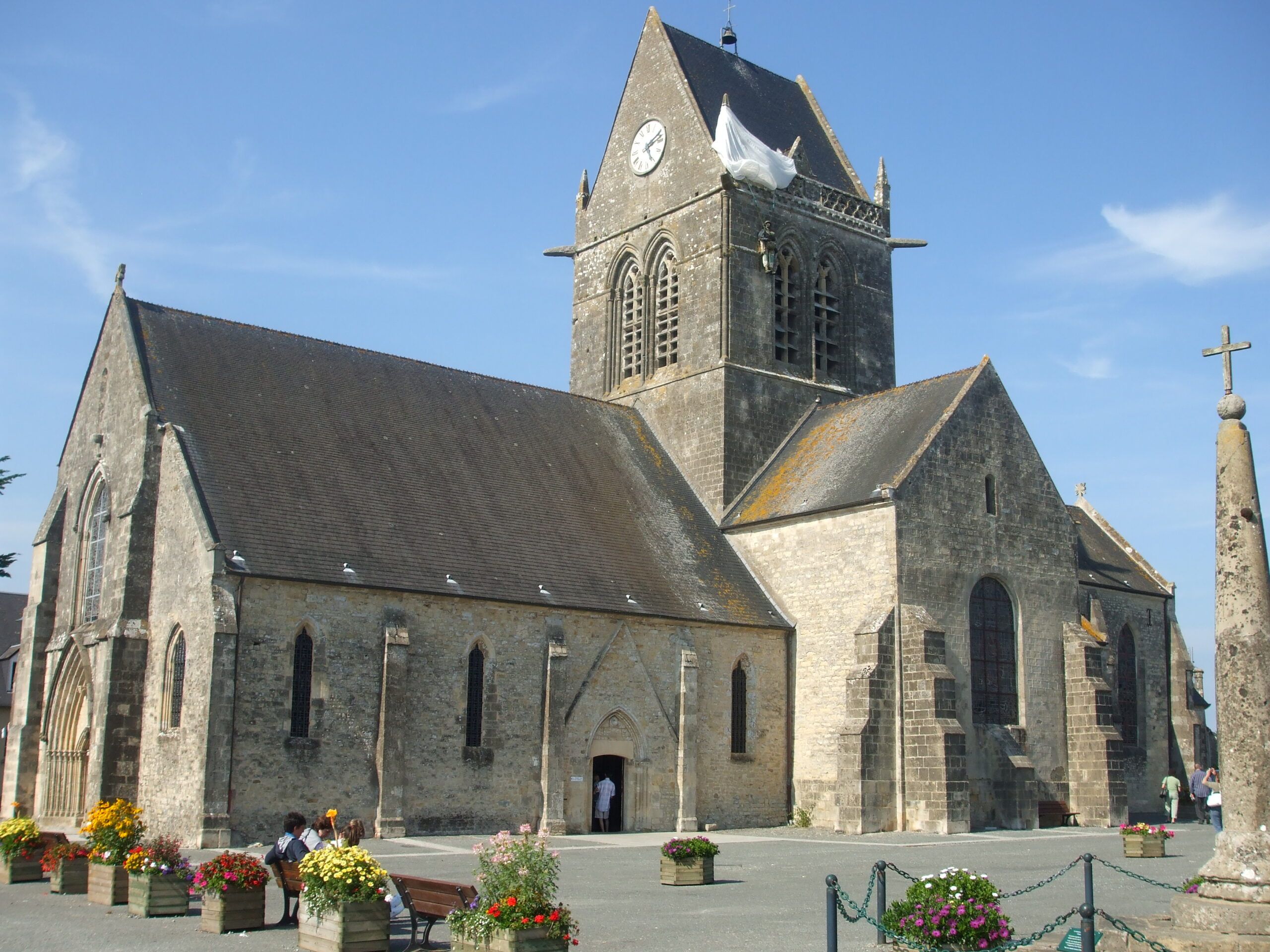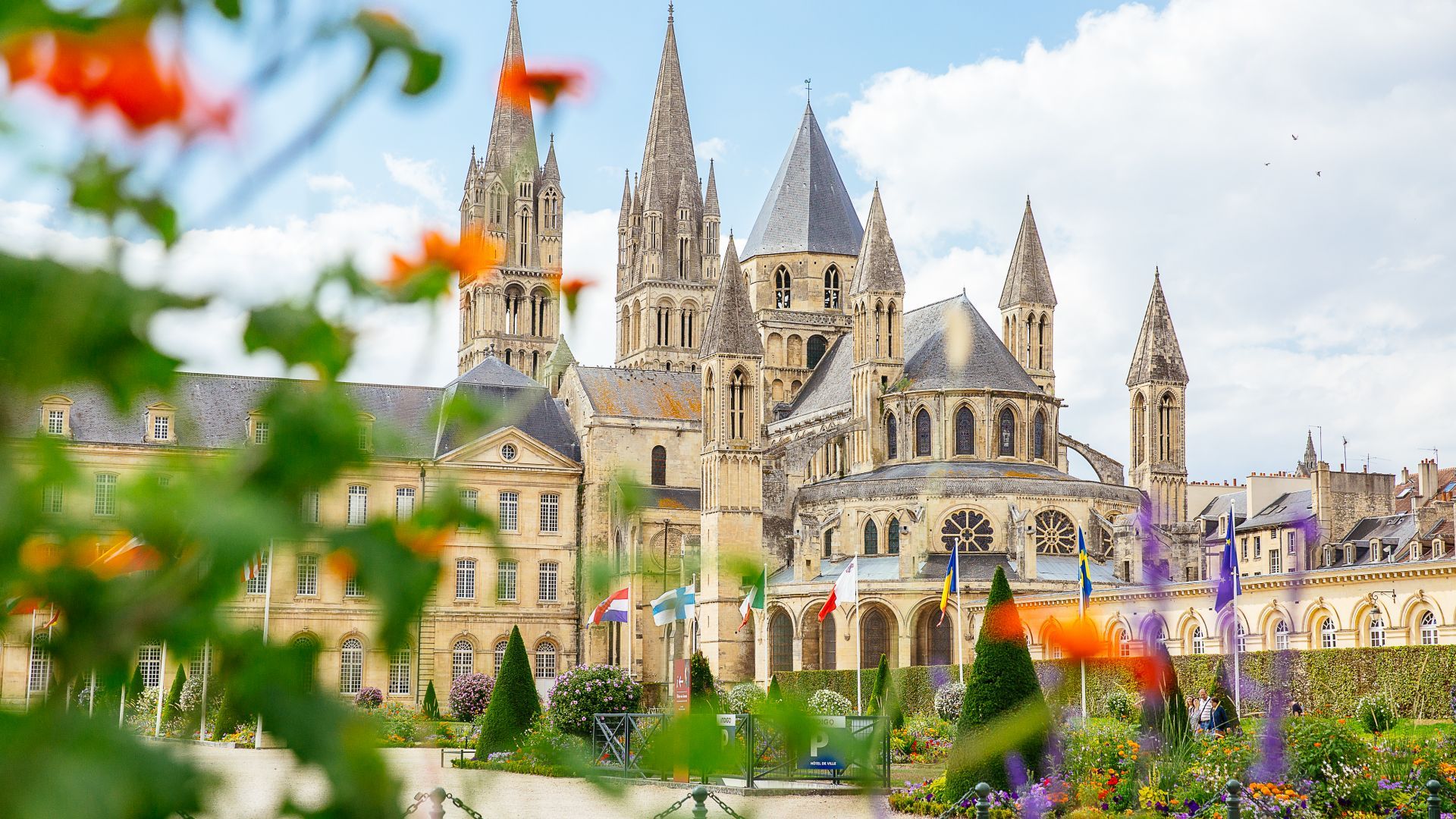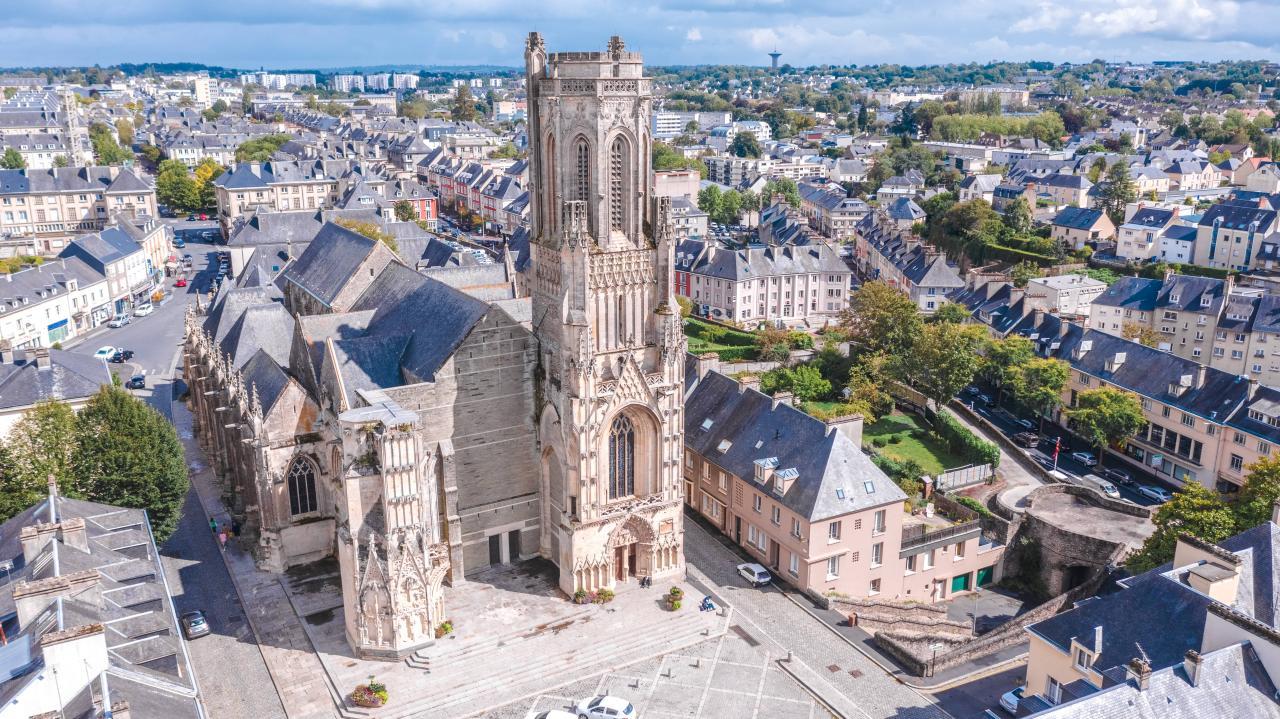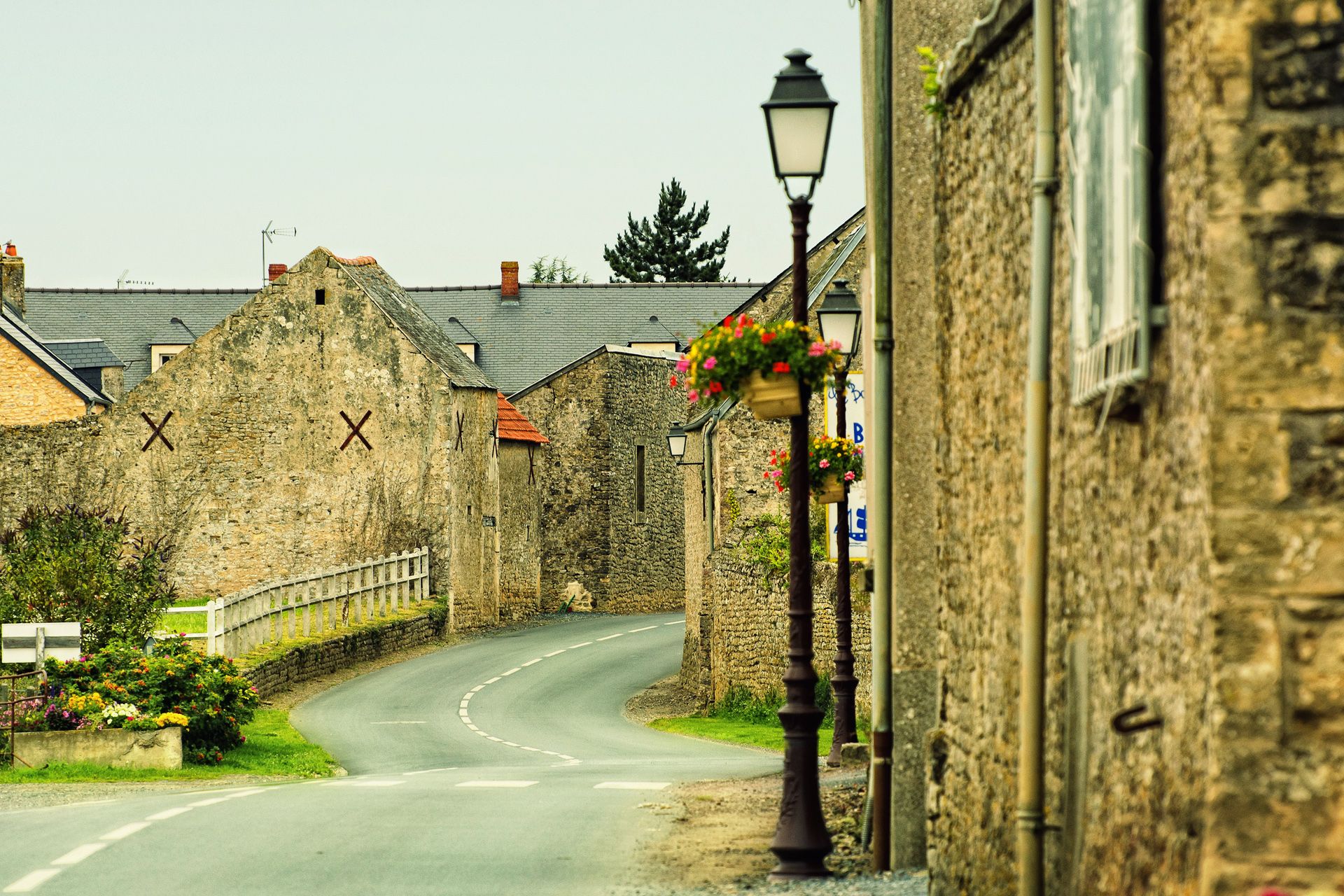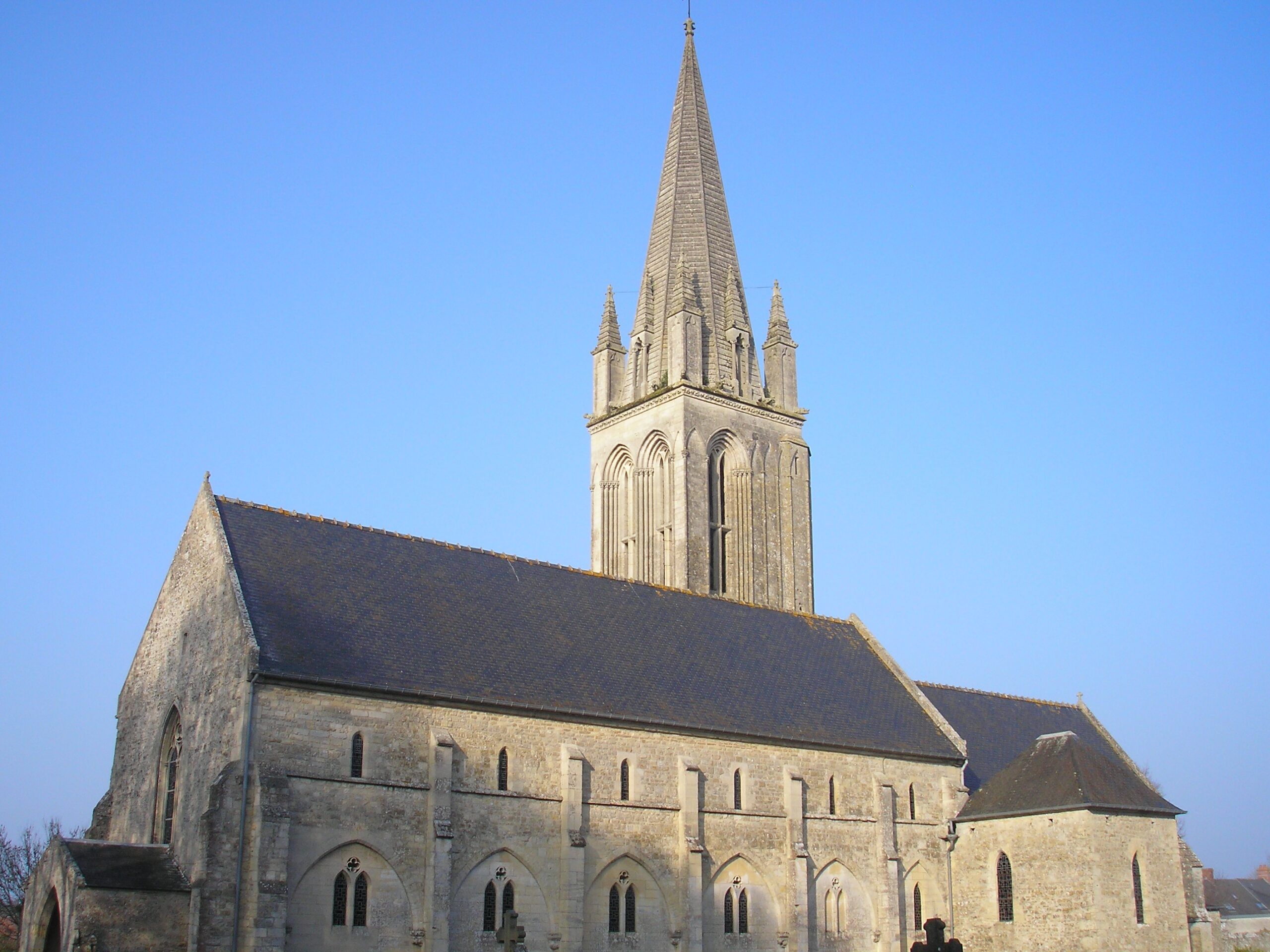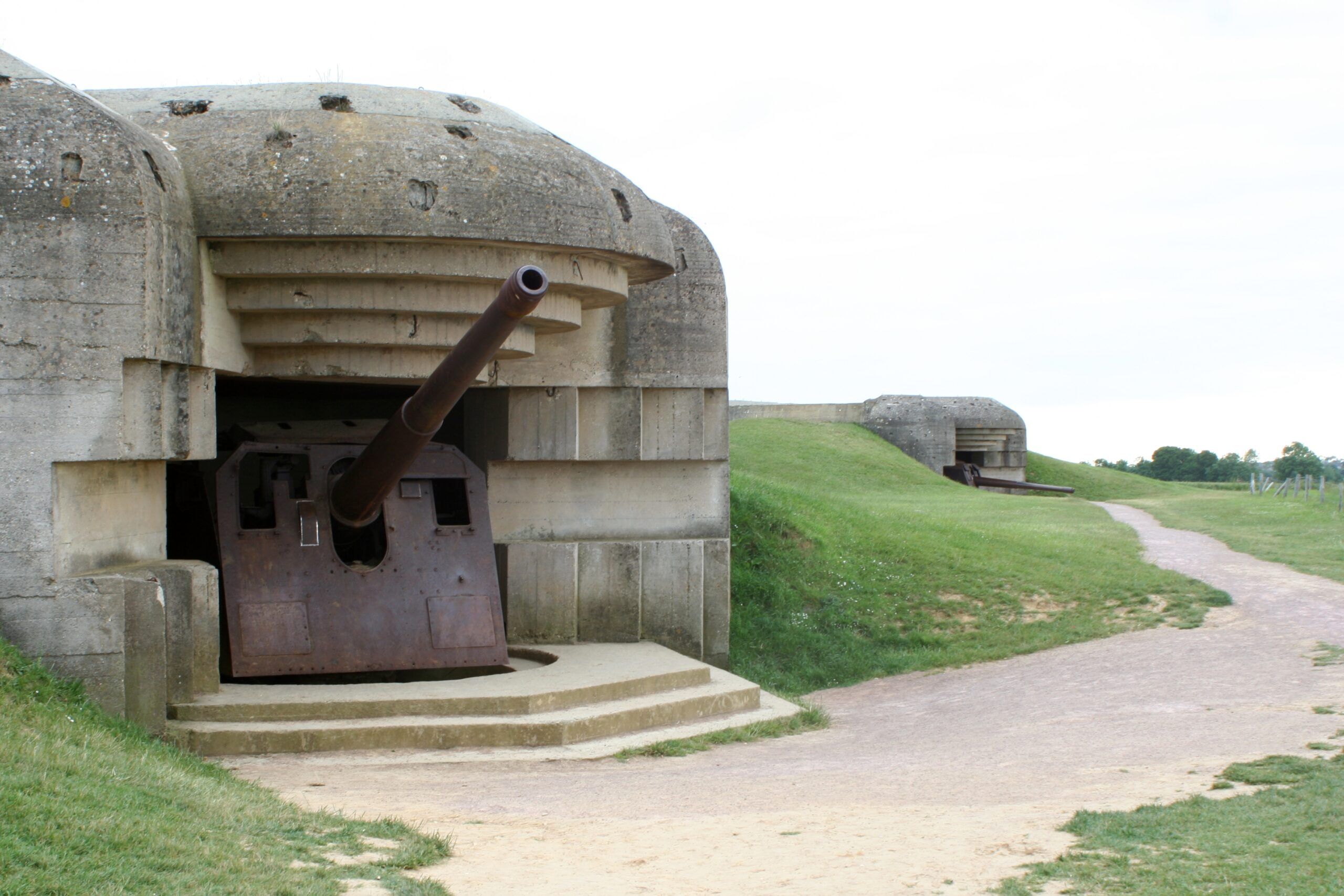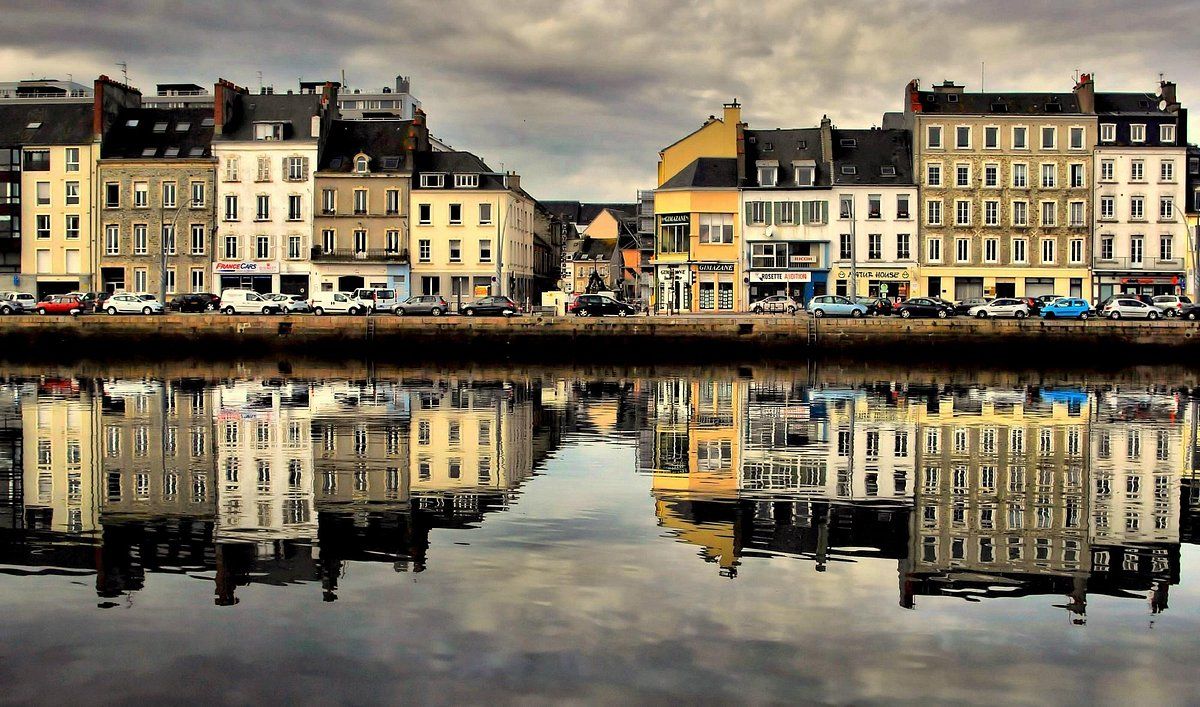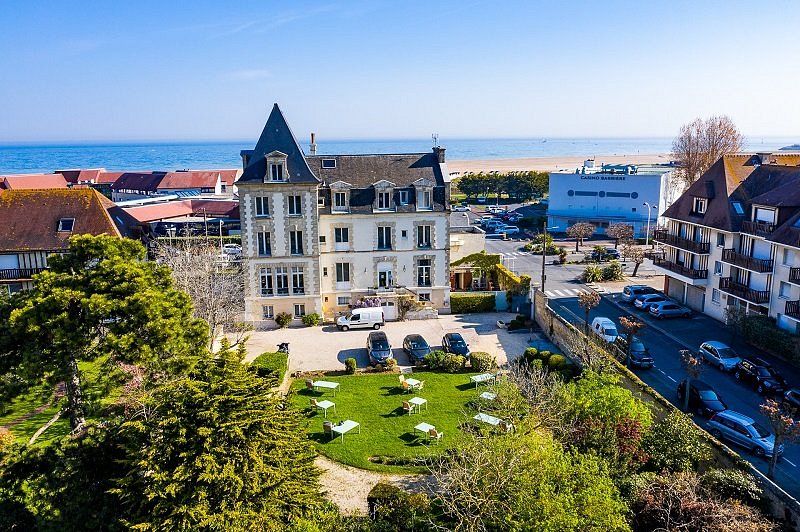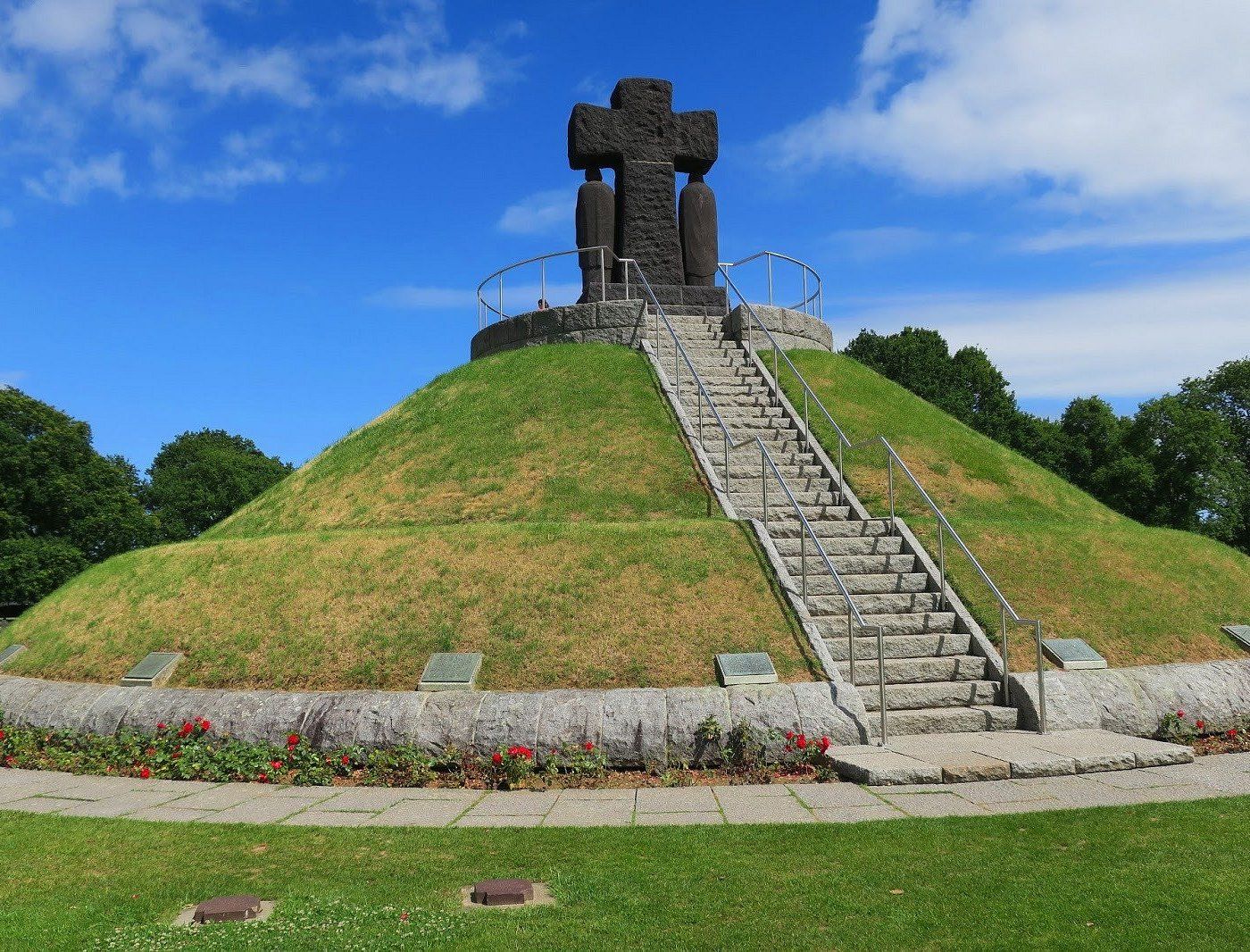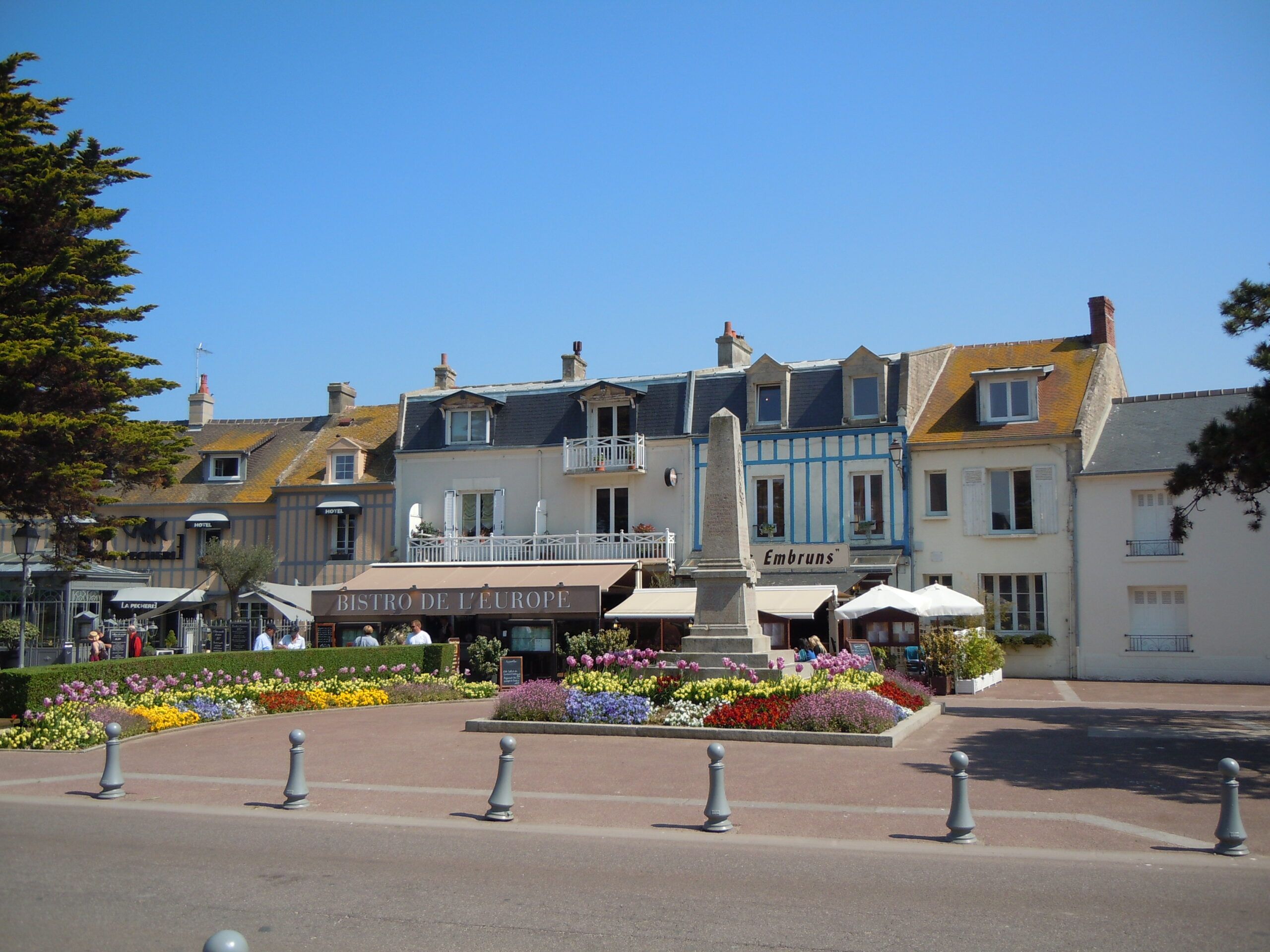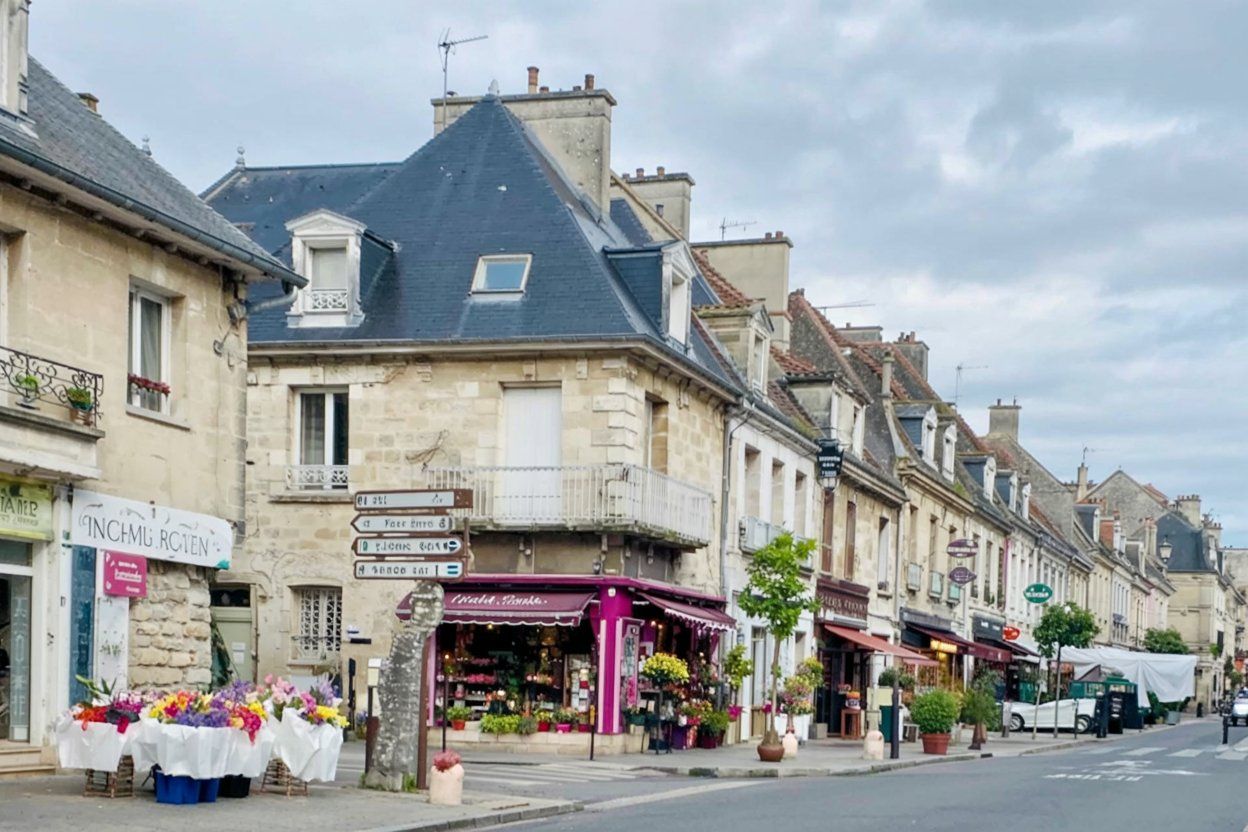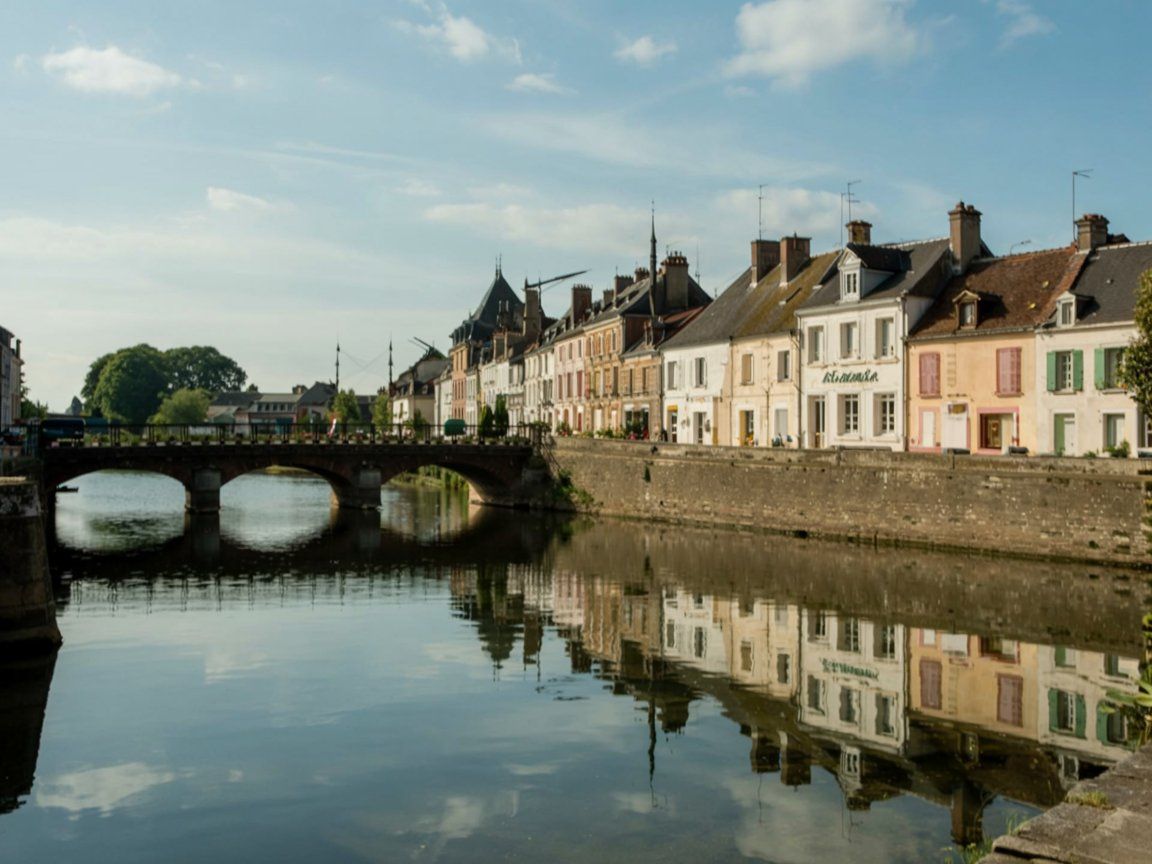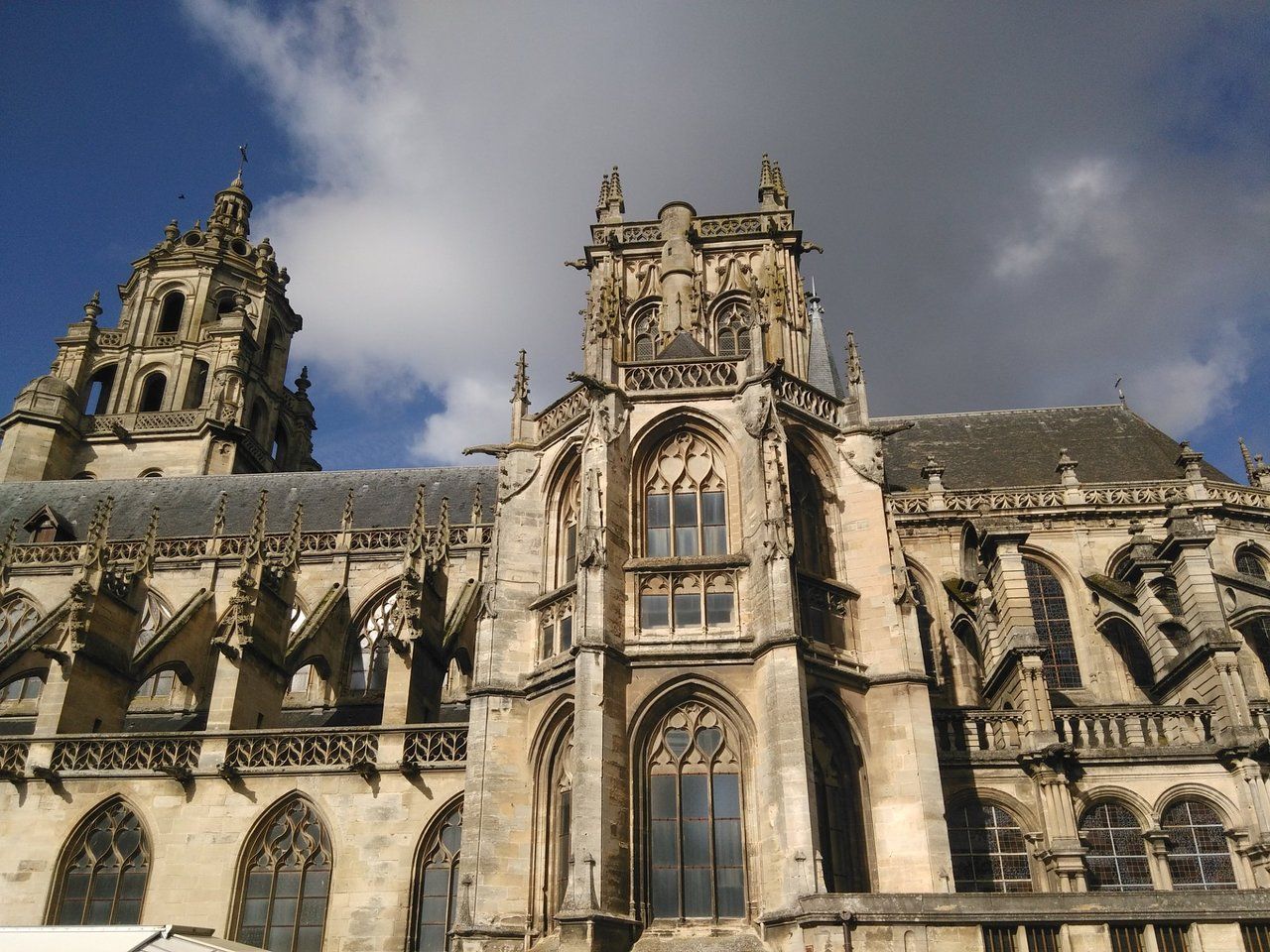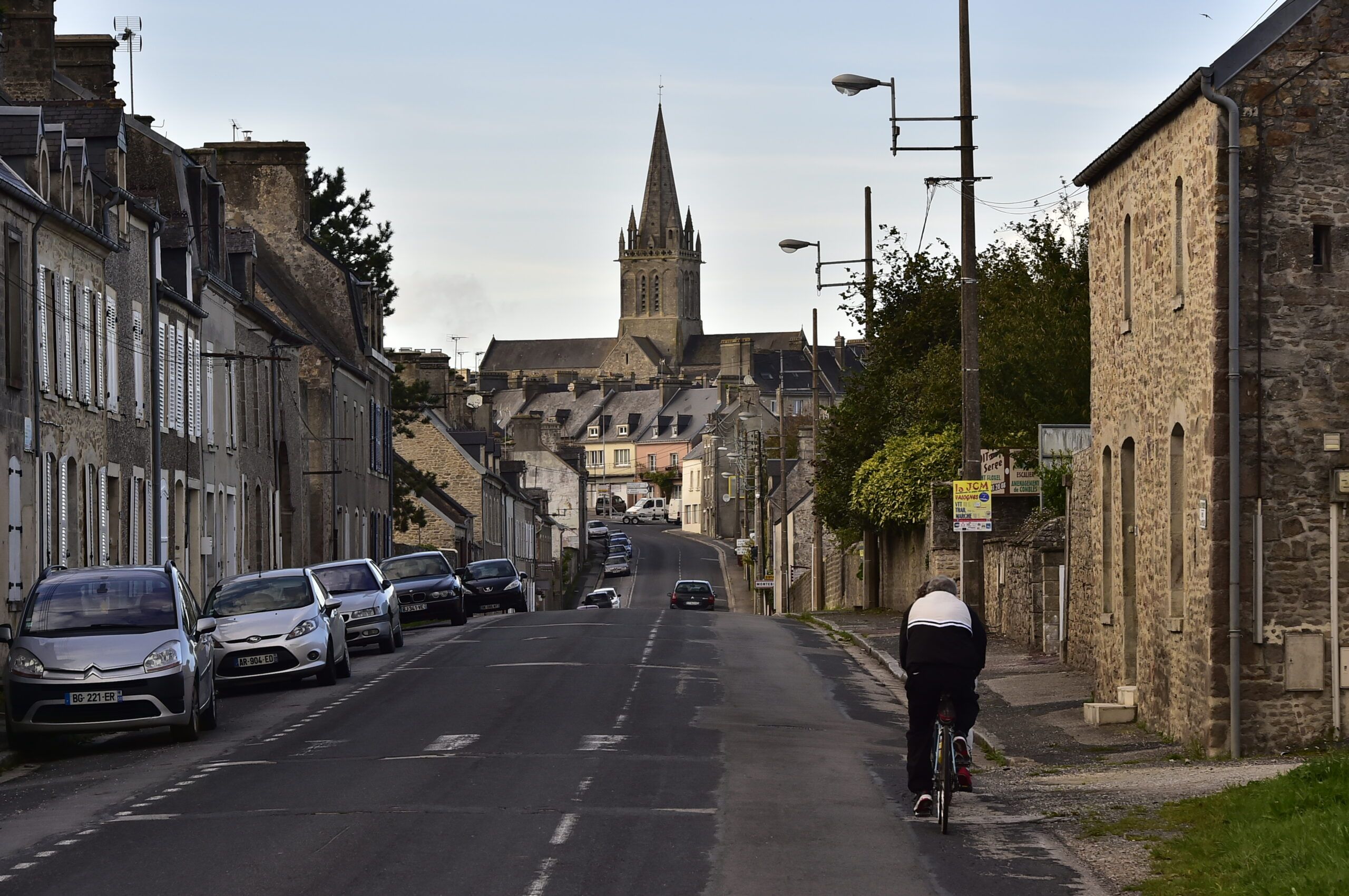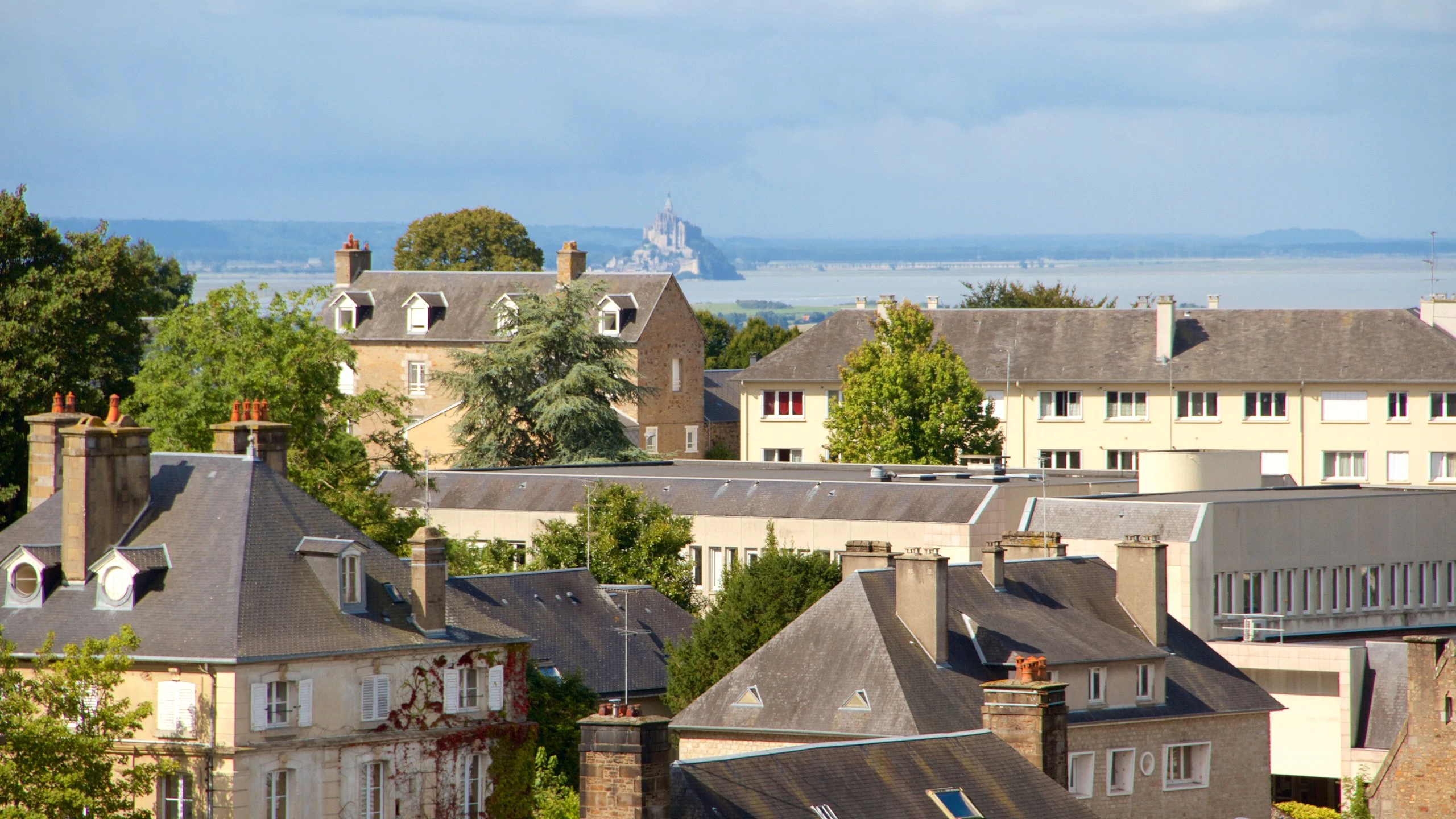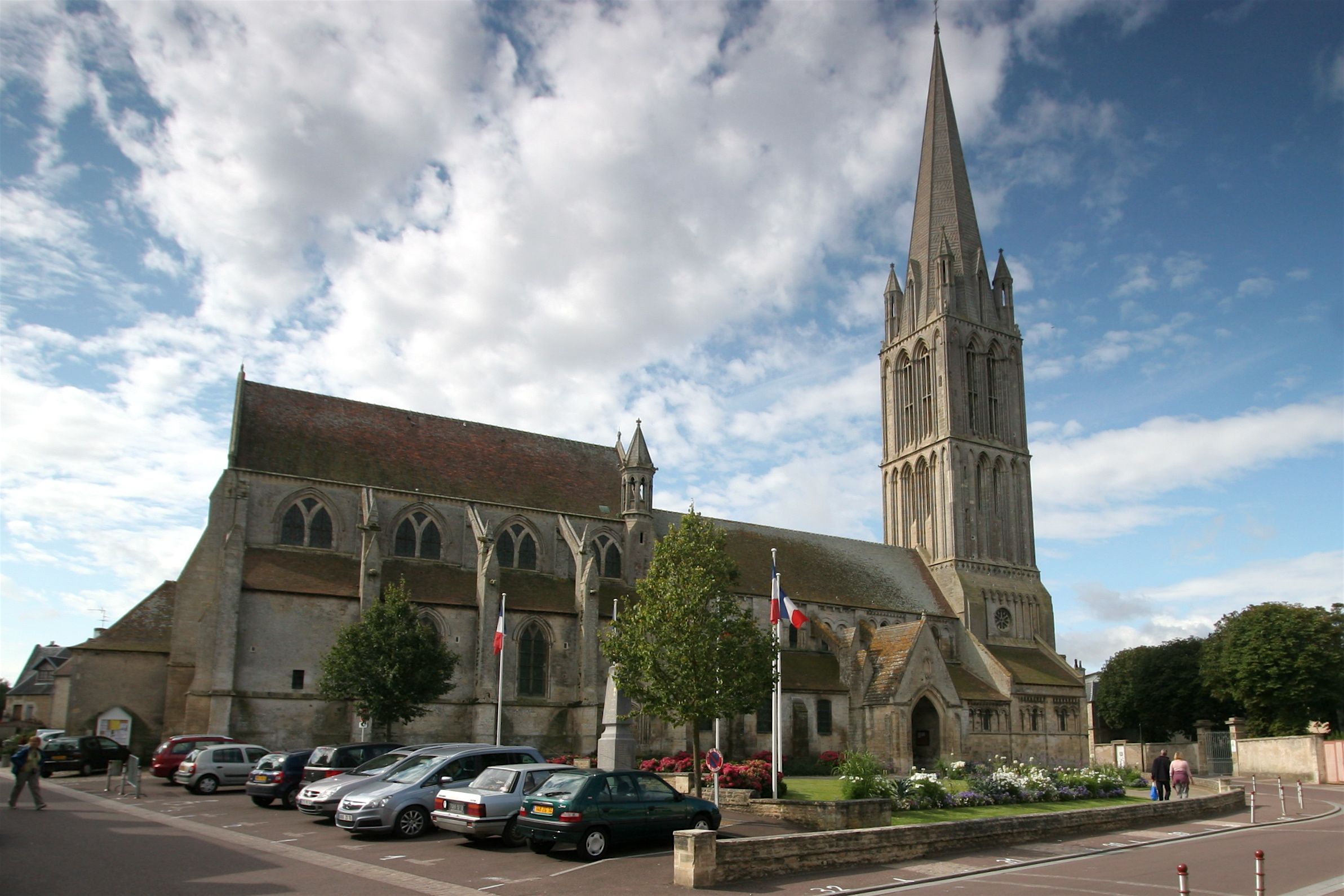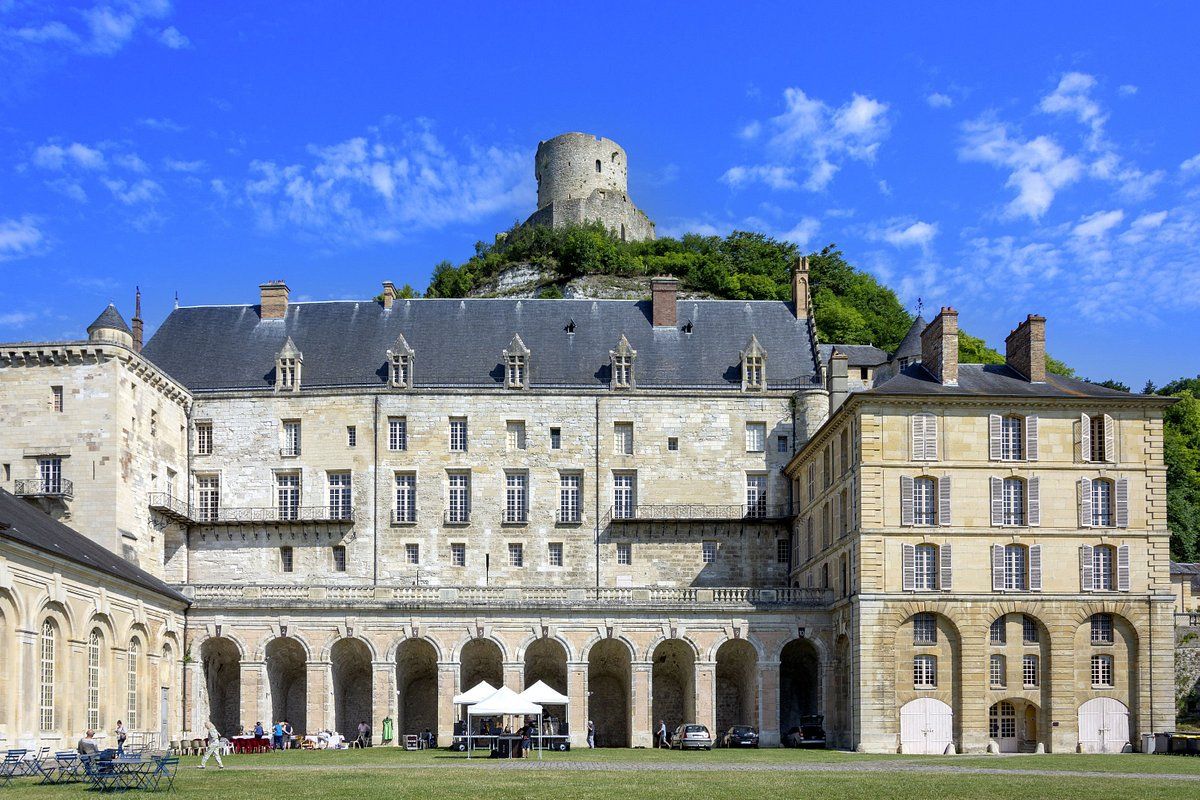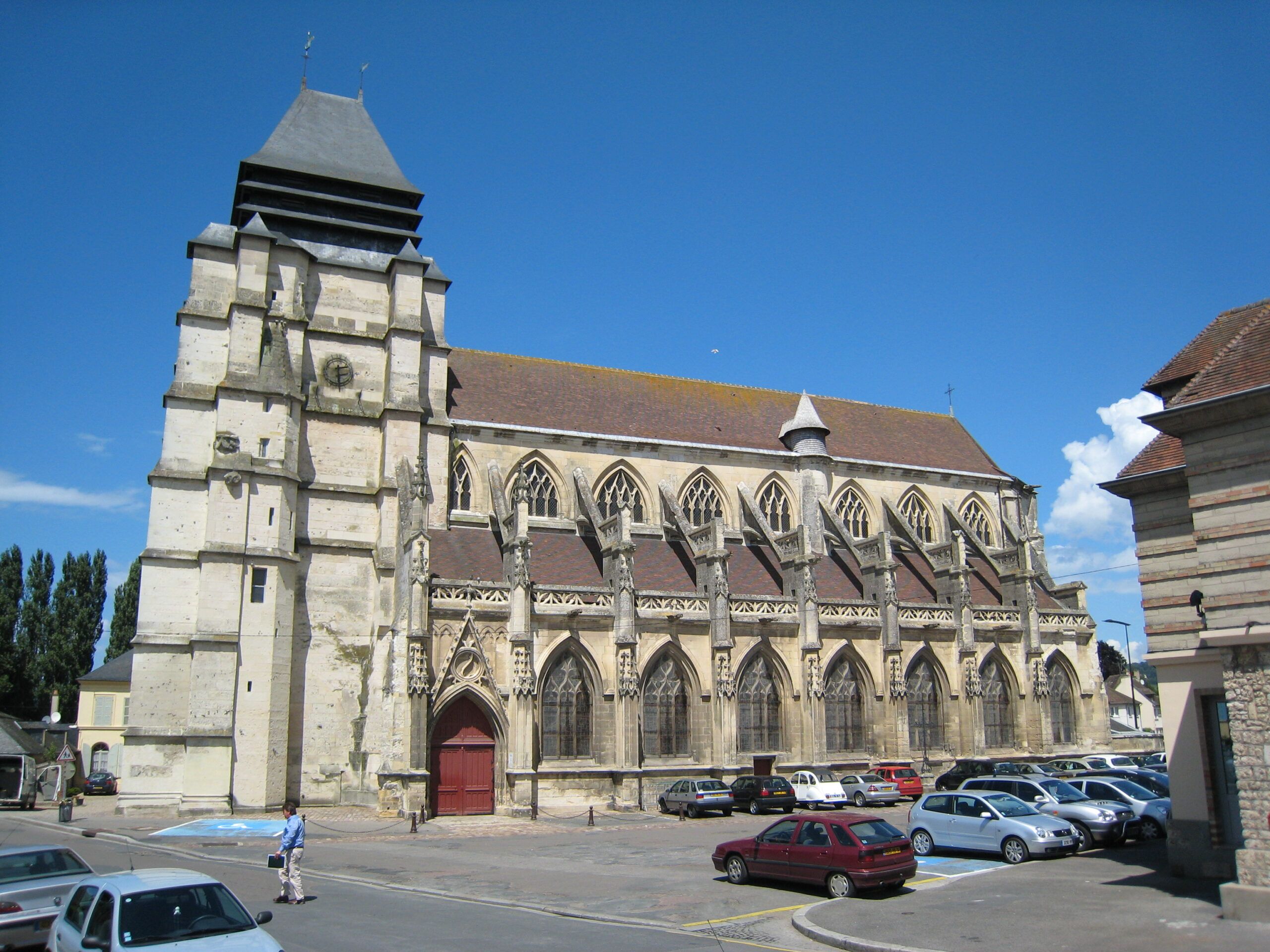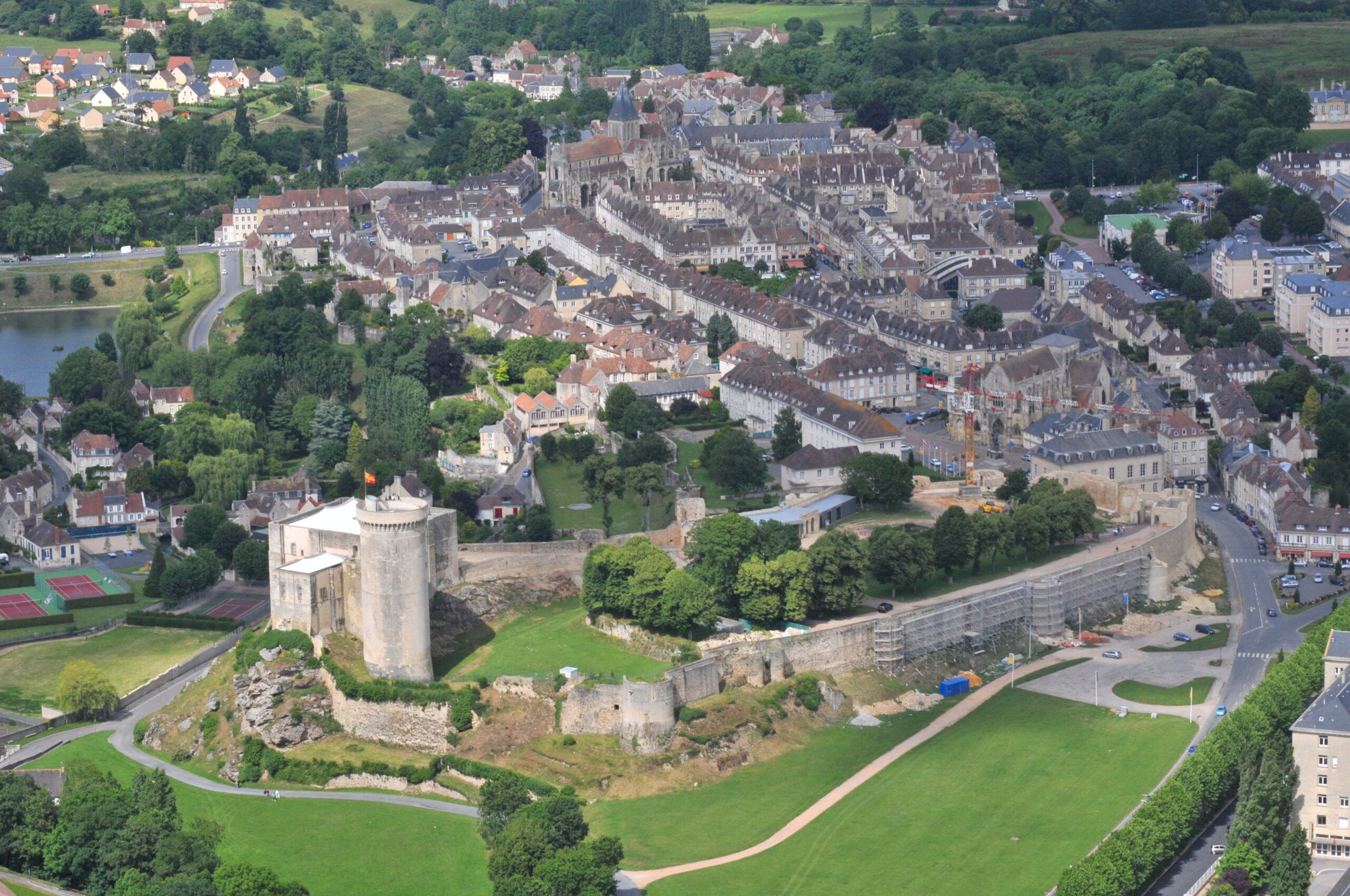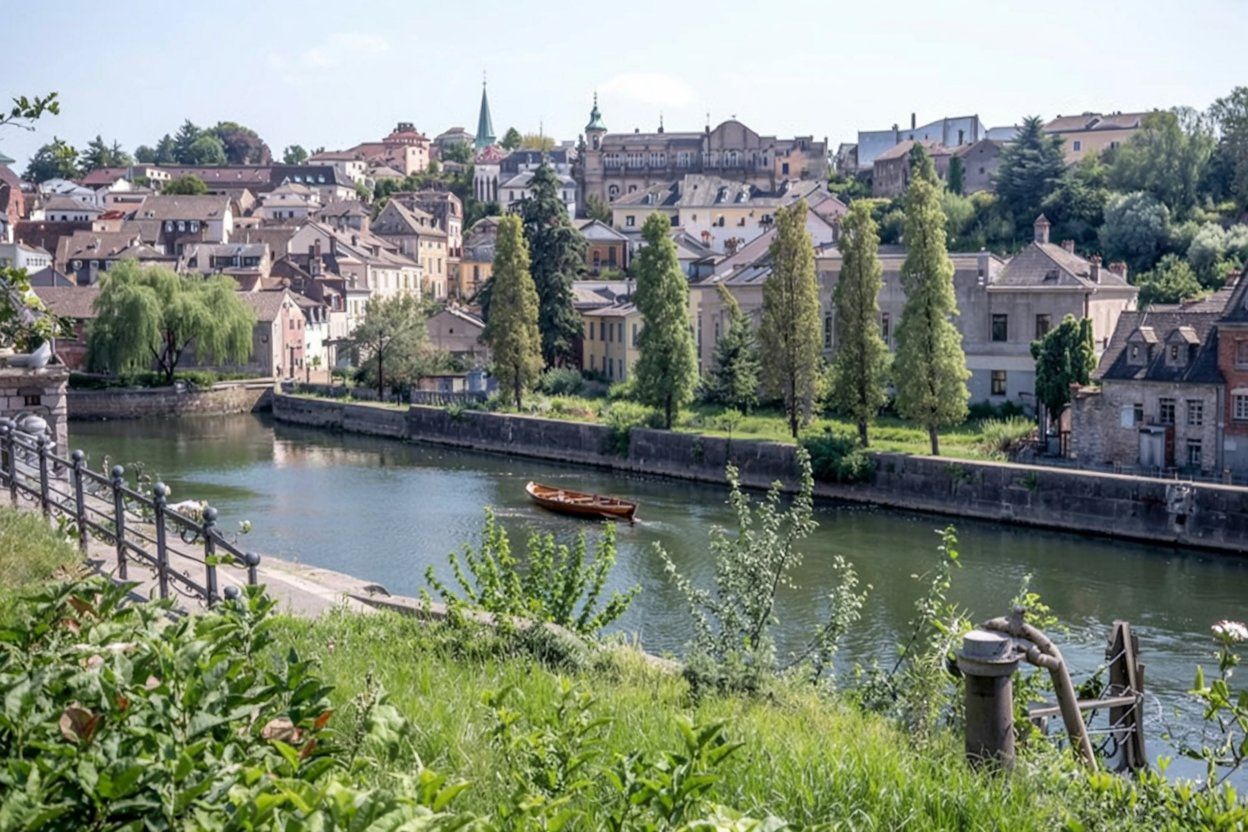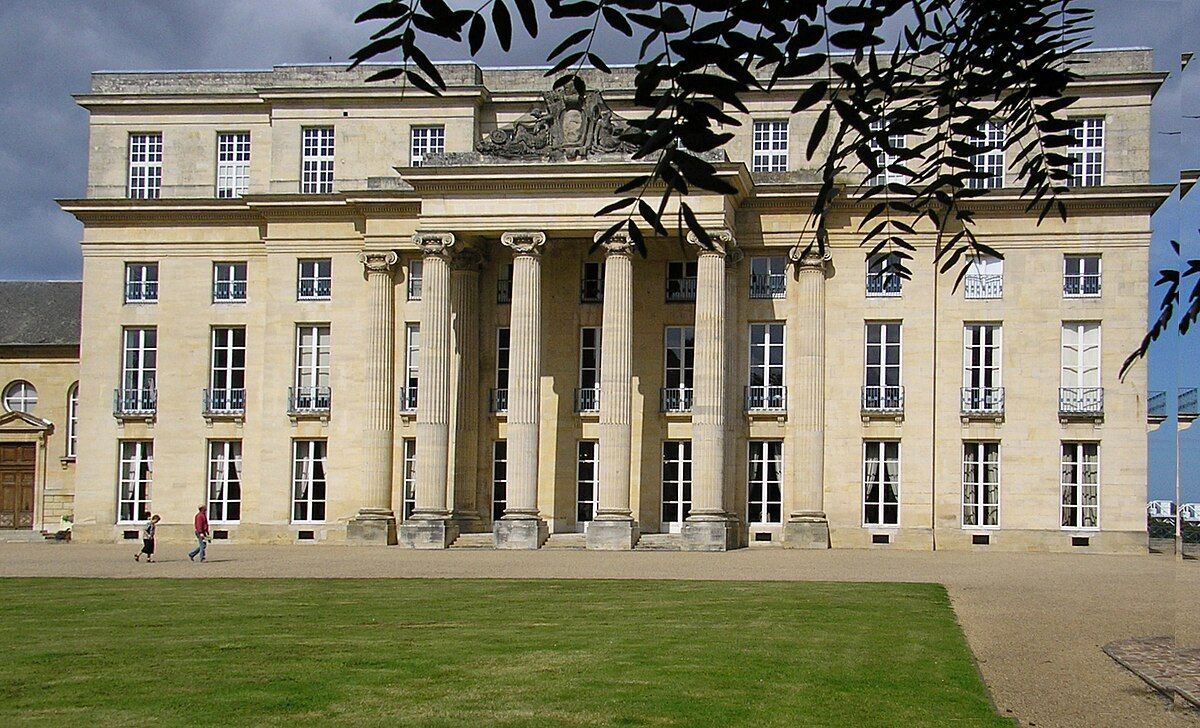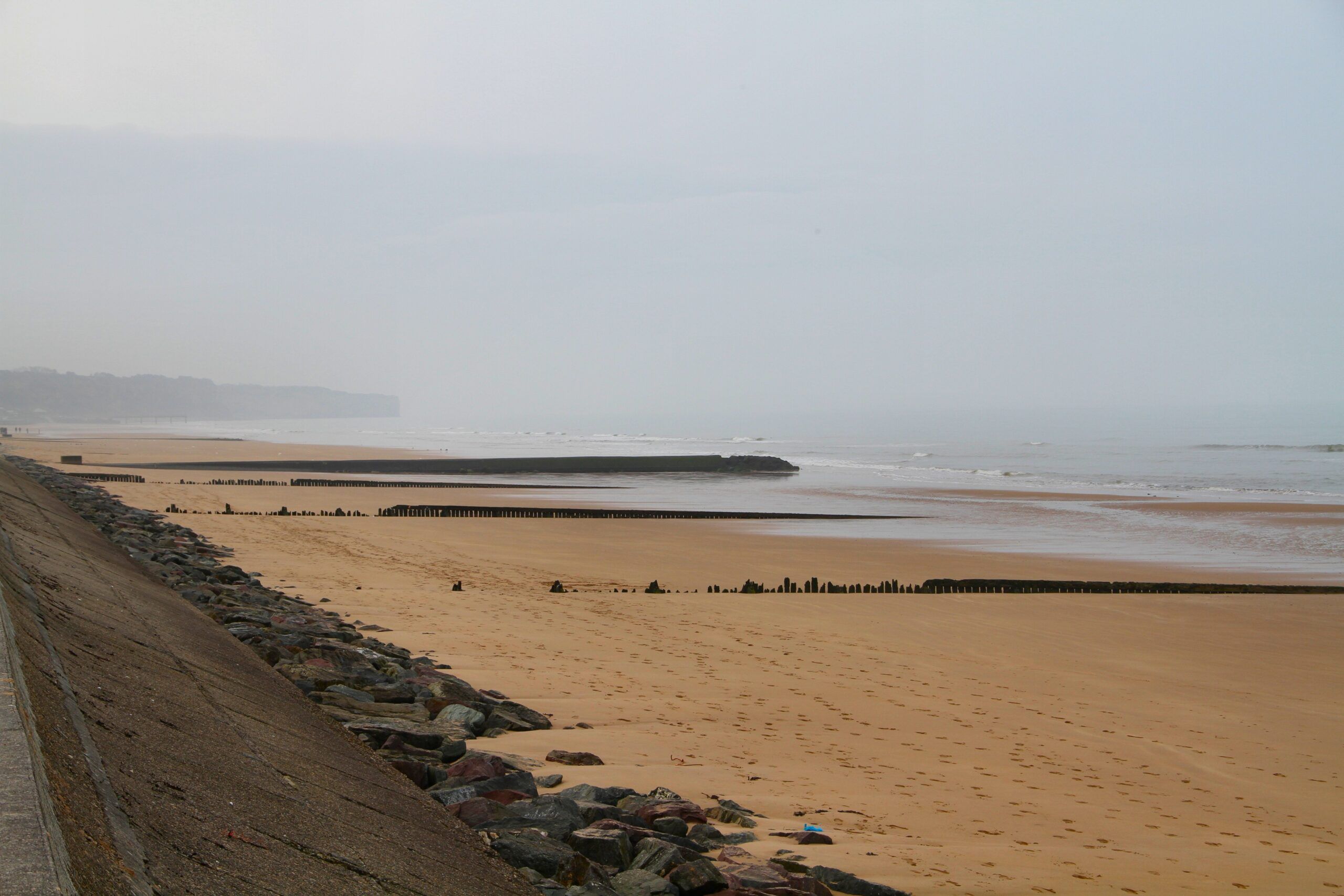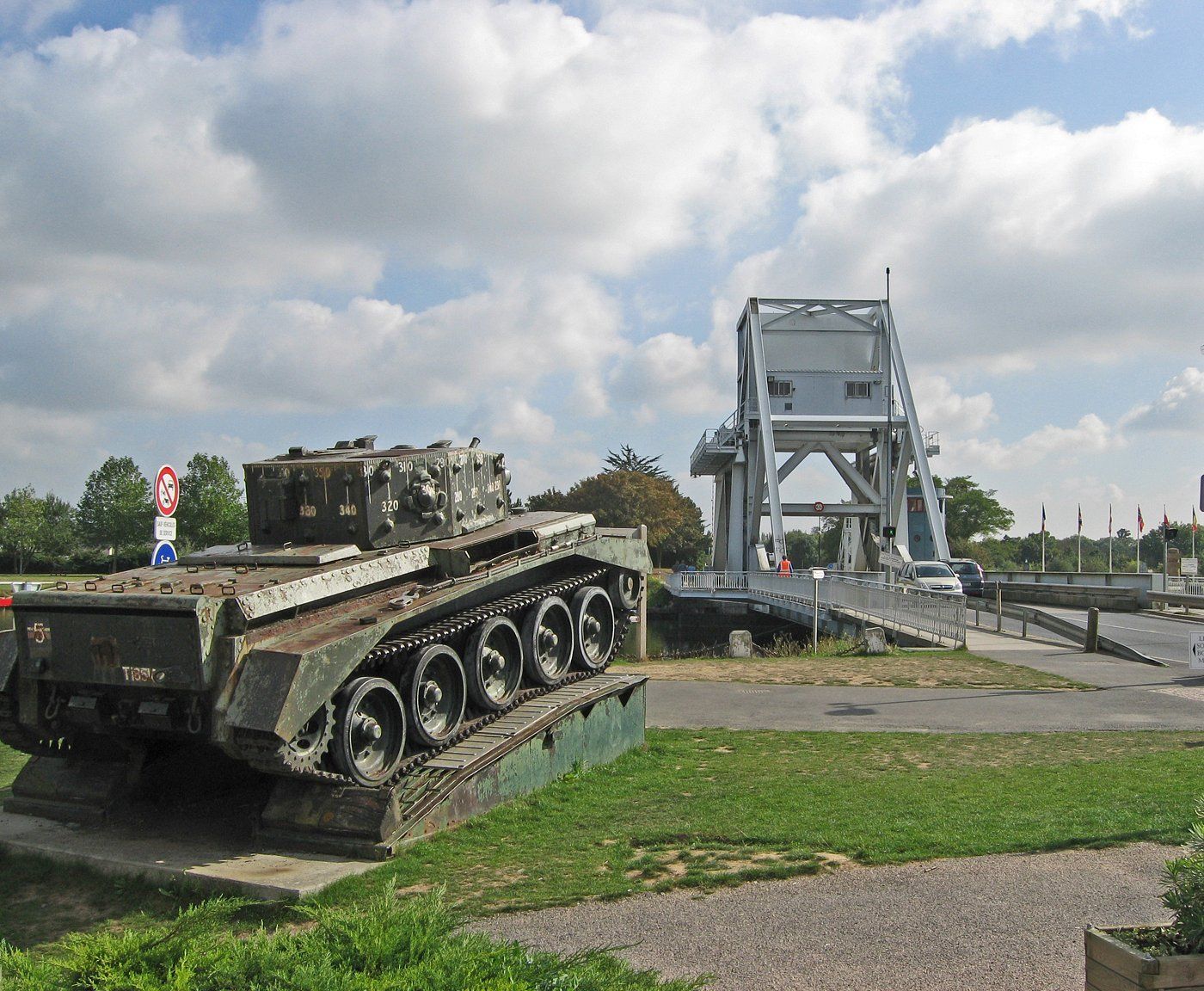Caen sits right in the heart of Normandy’s D-Day story, making it a natural launching point for anyone curious about this pivotal World War II chapter. The city’s Memorial Museum opened on June 6, 1988—exactly 44 years after D-Day. It’s a fantastic spot to get your bearings and some crucial background before heading out to the landing beaches or battle sites. If you’re planning a Normandy trip, this museum really ought to be your first stop.
You can easily fill a whole day in Caen before heading to the beaches where Allied troops landed on June 6, 1944. The Memorial Museum offers both self-guided and expert-led tours to major D-Day sites. Their guides know their stuff—many trained by the museum’s own historians—and will take you along the five main landing beaches: Utah, Omaha, Gold, Juno, and Sword.
Visit Recommended D-Day historic hotels and B&Bs along the invasion beaches.
But Caen isn’t just about war history. The city mixes the past with a lively present. After brushing up on the events that changed Europe, wander through streets lined with medieval architecture that somehow survived the conflict. If you’re eyeing a visit in 2025, starting in Caen gives you context before you dive deeper into Normandy’s remembrance sites, museums, and cemeteries.
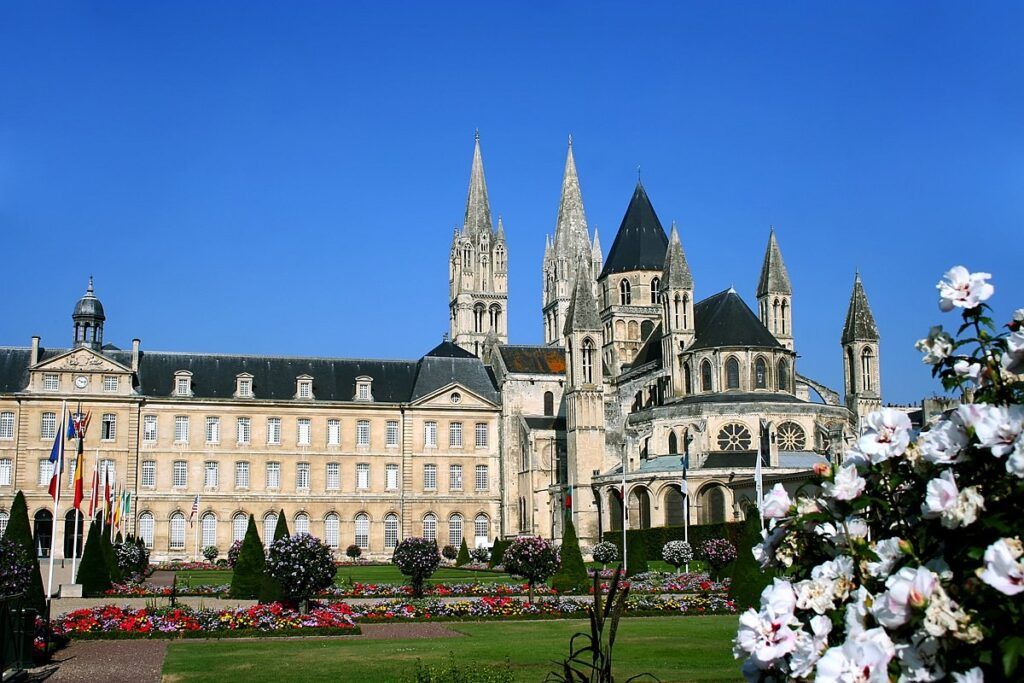
Overview of Caen and Normandy
Caen is smack in the middle of Normandy, a region bursting with history and a key role in World War II. The city works well as a base for D-Day explorations and has its own compelling wartime story plus plenty of modern-day appeal.
Geographical and Historical Context
Caen sits in the Calvados department of northern France, only about 15 miles from the English Channel. William the Conqueror founded the city in the 11th century and built the castle that still dominates the skyline.
Normandy stretches along France’s northern coast, and its strategic location has shaped European history for centuries—from Viking times through the Middle Ages.
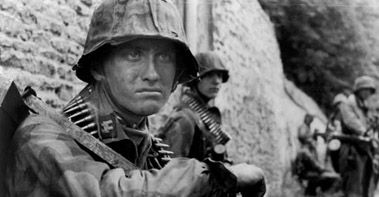
Since Caen is just 20-30 minutes by car from the D-Day beaches, it’s a practical hub for visitors. Trains connect Caen to Paris in under two hours, so getting here isn’t much trouble.
The landscape ranges from coastal plains to rolling countryside, with the River Orne running right through Caen, splitting the old town from the newer parts.
Importance in World War II
During World War II, Caen became a key objective in the Battle of Normandy. Allied bombers hit Caen hard before D-Day to stop German reinforcements from reaching the beaches.
On June 6, 1944, the Allies stormed five Normandy beaches: Utah, Omaha, Gold, Juno, and Sword. They hoped to take Caen on the first day, but it took British and Canadian forces until July 19 to fully secure the city.
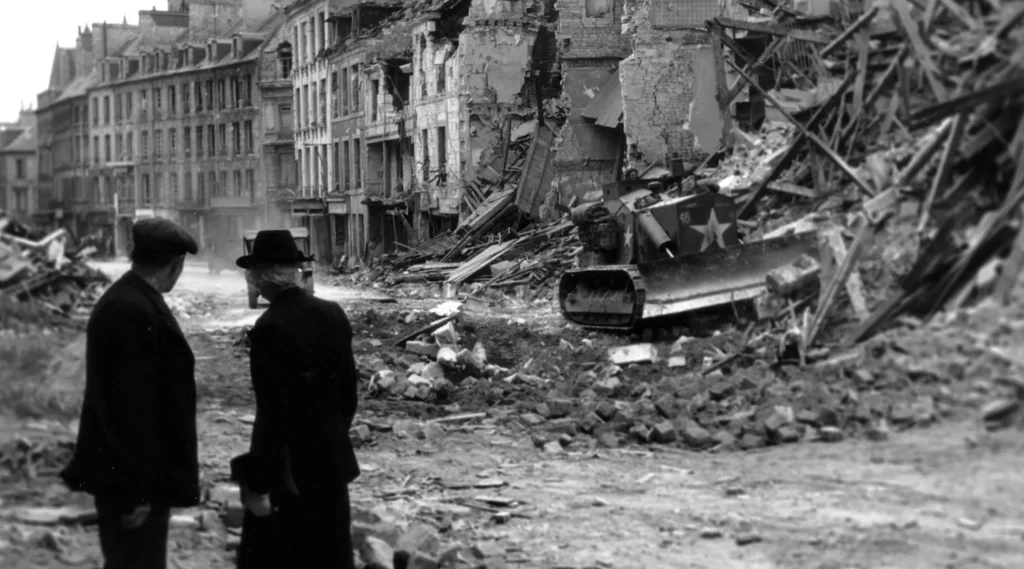
The Caen Memorial Museum, which opened on D-Day in 1988, is now one of France’s top World War II museums. It covers the 20th century’s conflicts, with detailed exhibits about the Normandy landings.
These days, Caen draws over a million Americans each year who come to see the D-Day sites and honor those who fought for freedom.
Stay steps from Omaha Beach and historic landmarks. Best rates on local accommodations.
Major D-Day Sites Around Caen
Caen is a great base for exploring the most important D-Day landing areas in Normandy. The region around the city is dotted with crucial battle sites where the Allies began their push into Europe.
Pegasus Bridge
Pegasus Bridge was the scene of one of D-Day’s boldest missions. British airborne troops seized this key crossing over the Caen Canal in the first minutes of June 6, 1944, stopping German reinforcements from reaching the beaches.
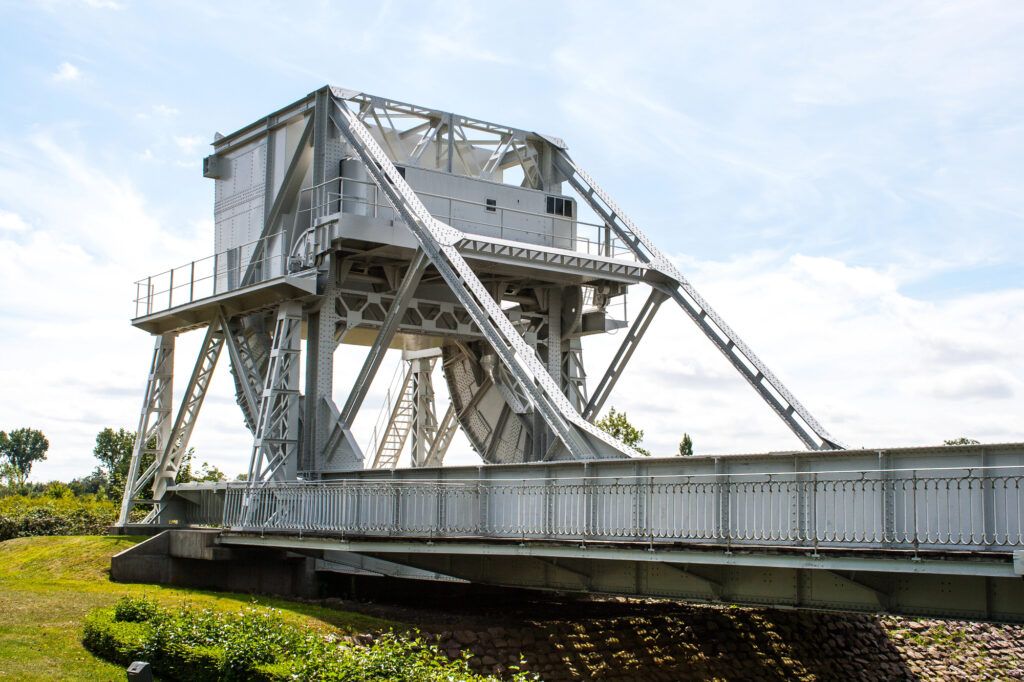
The Pegasus Memorial Museum displays the original bridge and plenty of artifacts. There’s also Café Gondrée nearby, which claims to be the first building liberated in France—it’s still open for visitors.
Check out the glider landing markers in the fields. The precision of this operation is still pretty mind-blowing.
Sword Beach
Sword Beach was the Allies’ easternmost landing zone. British and French commandos landed here, aiming to link up with airborne troops and push toward Caen.
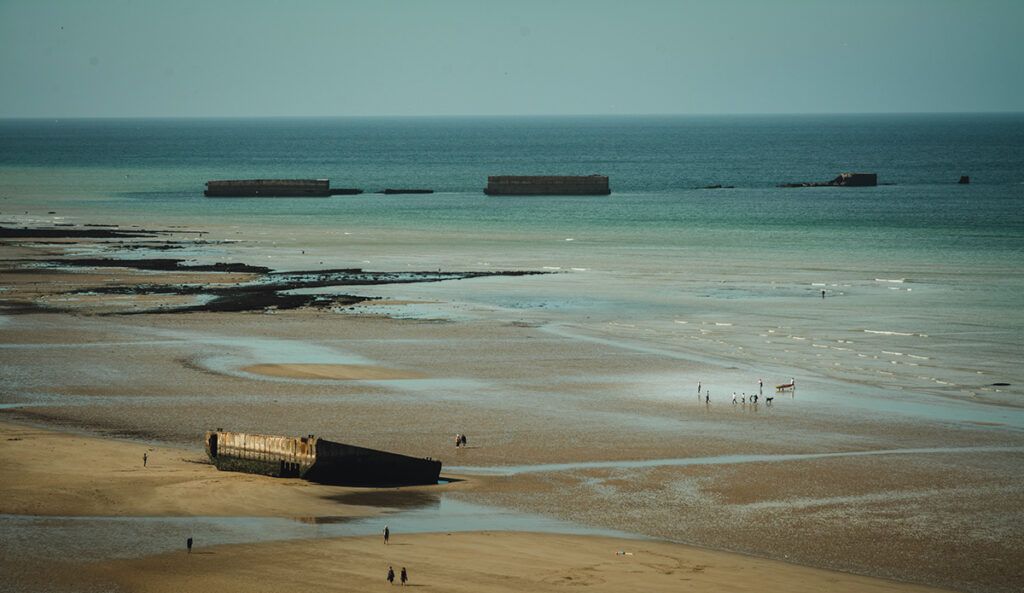
The shore feels peaceful now, but you’ll spot monuments and museums marking the tough spots. The Atlantic Wall Museum in Ouistreham lets you see German bunkers up close.
A memorial honors the Free French Commandos who landed here, and their museum tells their story. Tanks and artillery pieces still line the beachfront as silent reminders of the fighting.
Gold Beach
Gold Beach sits between Omaha and Juno. British forces landed here, aiming to capture Bayeux. Despite tough resistance, they pulled it off.
The America Gold Beach Museum in Ver-sur-Mer covers the naval operations behind the landings. The British Normandy Memorial, opened in 2021, lists all 22,442 British servicemen lost during the Battle of Normandy.
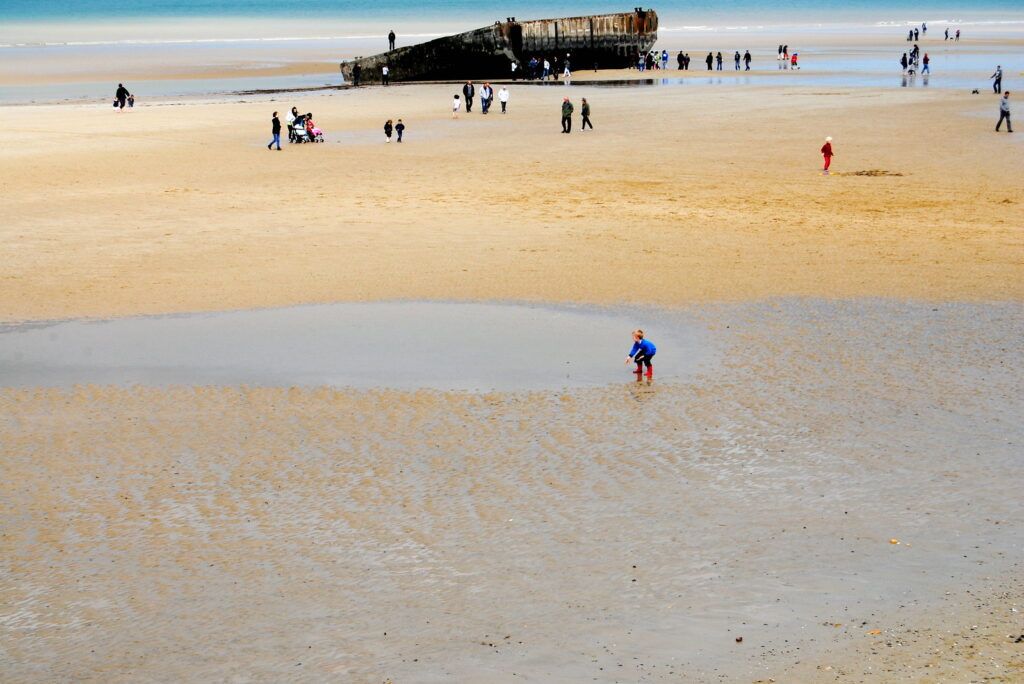
At Arromanches, you can still spot the remains of the Mulberry Harbor at low tide. The 360° Circular Cinema shows panoramic films of the harbor in action.
There are walking trails connecting these sites, so you can literally follow in the footsteps of the troops.
Normandy Beaches and Key Locations
The D-Day landings stretched across five main Normandy beaches. Each one saw its own brutal fight and left a unique mark on history.
Omaha Beach
Omaha Beach runs for about 5 miles along the coast. American troops faced the worst German resistance here—over 2,000 casualties just on day one.
Today, several memorials line the beach. The Les Braves sculpture rises from the sand, symbolizing freedom and hope.
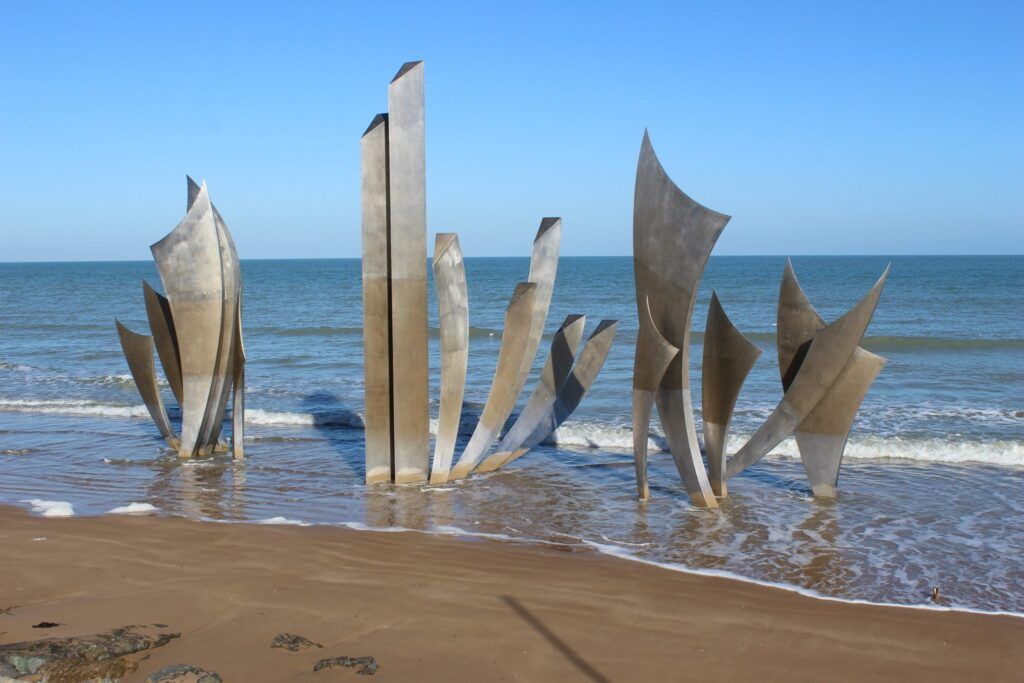
The American Cemetery looks down on Omaha Beach from the bluffs; 9,388 U.S. soldiers rest here. The visitor center shares stories and artifacts from the landings.
Nearby, the German strongpoint WN62 is still visible, with concrete bunkers and gun positions left from the battle.
Utah Beach
Utah Beach was the westernmost landing zone. The U.S. 4th Infantry Division landed about a mile off target due to strong currents, but that actually worked out—they met lighter resistance.
The Utah Beach Museum features a B-26 bomber and military vehicles. Interactive displays show how the invasion was coordinated between air, land, and sea.
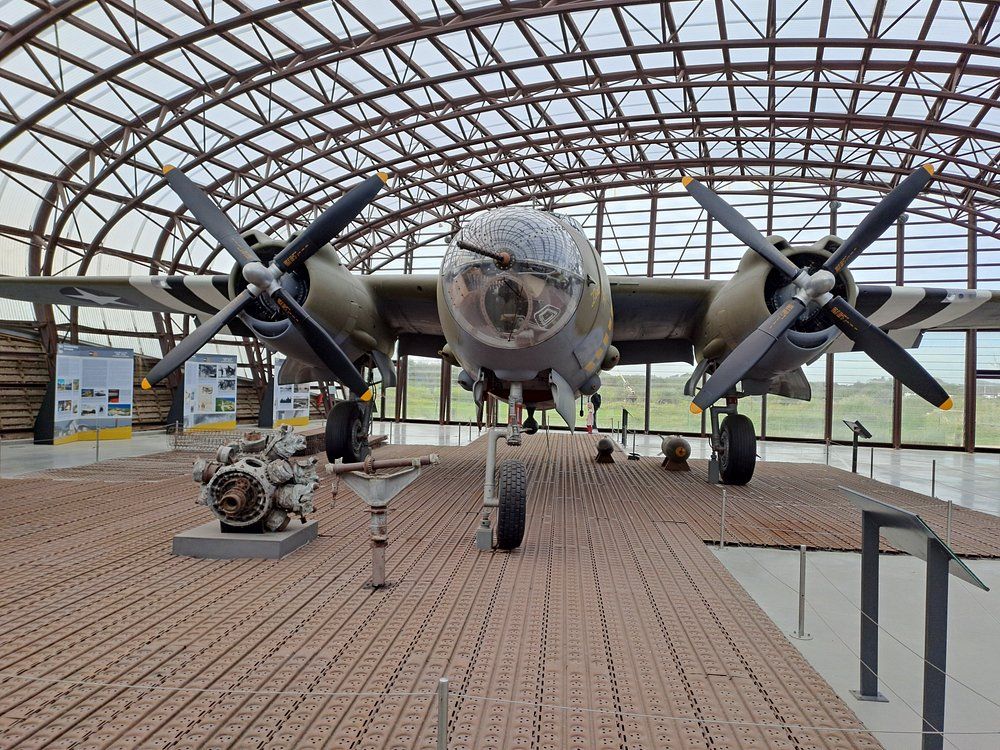
German bunkers still dot the beach. These days, it’s quieter than Omaha—families stroll along the sand where soldiers once charged ashore.
Nearby Sainte-Mère-Église is worth a stop. Paratroopers landed here before the beach assault, and the church’s famous mannequin hanging from the steeple commemorates John Steele, who got stuck during the drop.
Juno Beach
Canadian troops landed at Juno Beach, where they faced stiff resistance but managed to push nearly 10 kilometers inland—the furthest of any Allied force that day.
The Juno Beach Centre tells the story of Canada’s role in the invasion and wartime life. There are films, artifacts, and exhibits about the 14,000 Canadians who landed here.
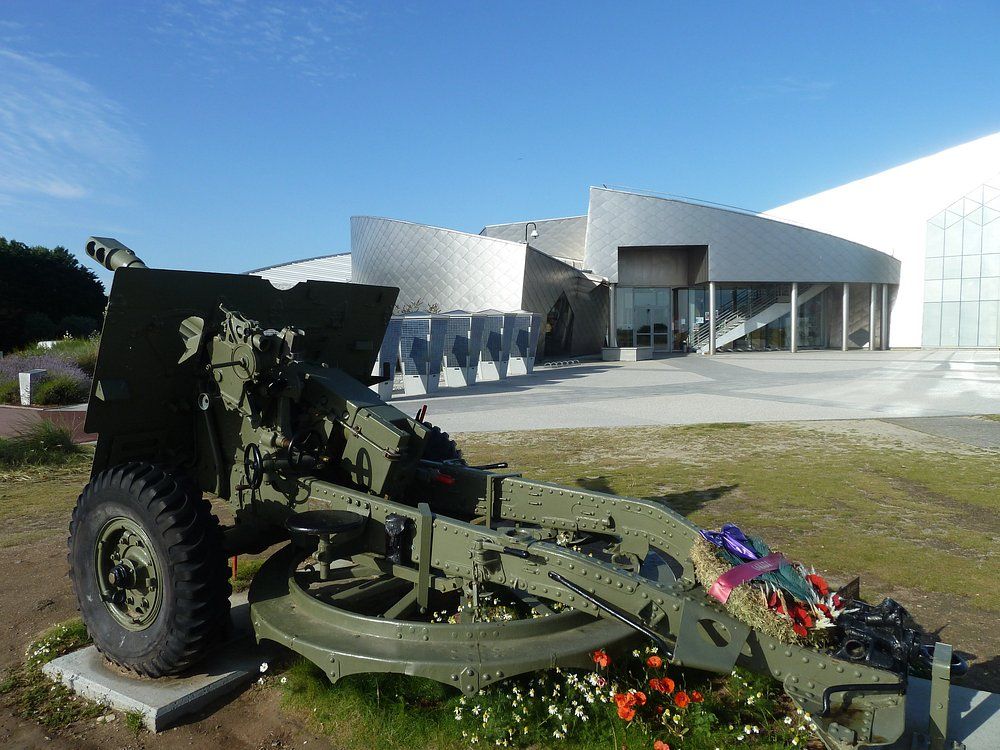
Some German defensive bunkers still stand, and walking tours with markers help you follow the battle’s progress.
In Courseulles-sur-Mer, you’ll spot a restored Churchill tank that landed on D-Day. Around anniversaries, you might even meet veterans or their families paying tribute.
Historic Landmarks and Museums
Caen is packed with important sites that help you understand World War II. These places preserve D-Day’s memory through artifacts, exhibits, and educational programs.
Caen Memorial
The Caen Memorial Museum is one of Europe’s top World War II museums, opening on June 6, 1988—the 44th D-Day anniversary. It covers the whole sweep of 20th-century conflict, with a focus on the D-Day landings and the Battle of Normandy.
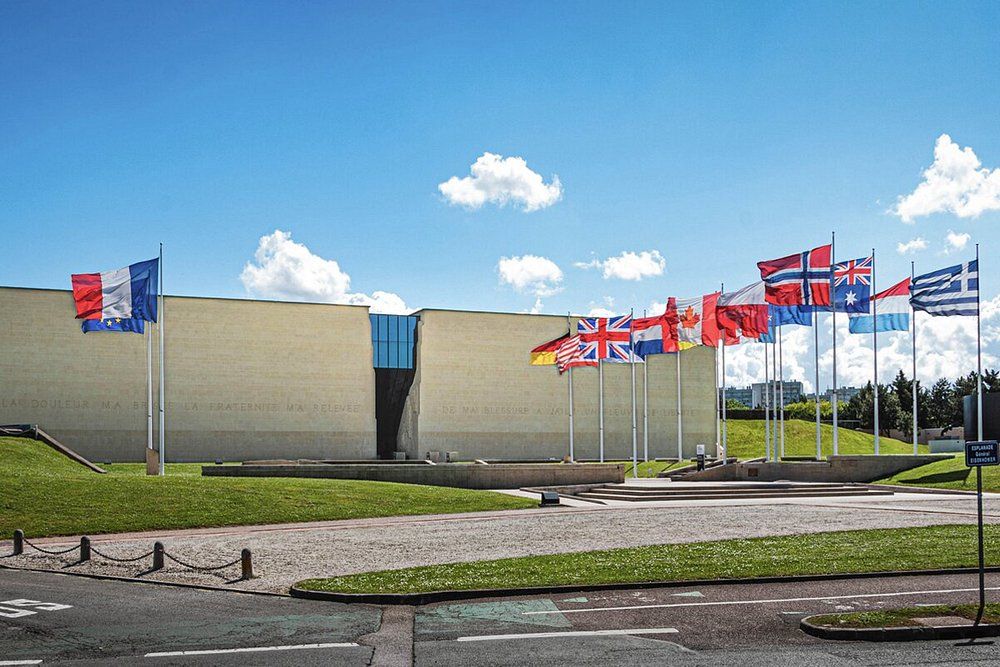
Exhibits include authentic military gear, personal items, and multimedia presentations. General Richter’s underground headquarters is a highlight, giving you a peek into German command operations during the invasion.
The memorial offers both self-guided and guided tours. Many folks say it’s the best place to start before heading to the beaches. Give yourself at least three hours to take it all in.
Battle of Normandy Museum
The Battle of Normandy Museum, in Caen’s historic center, zooms in on the 77-day campaign after D-Day. You’ll find maps, uniforms, weapons, and vehicles, plus personal accounts from soldiers and civilians that bring the stats to life.
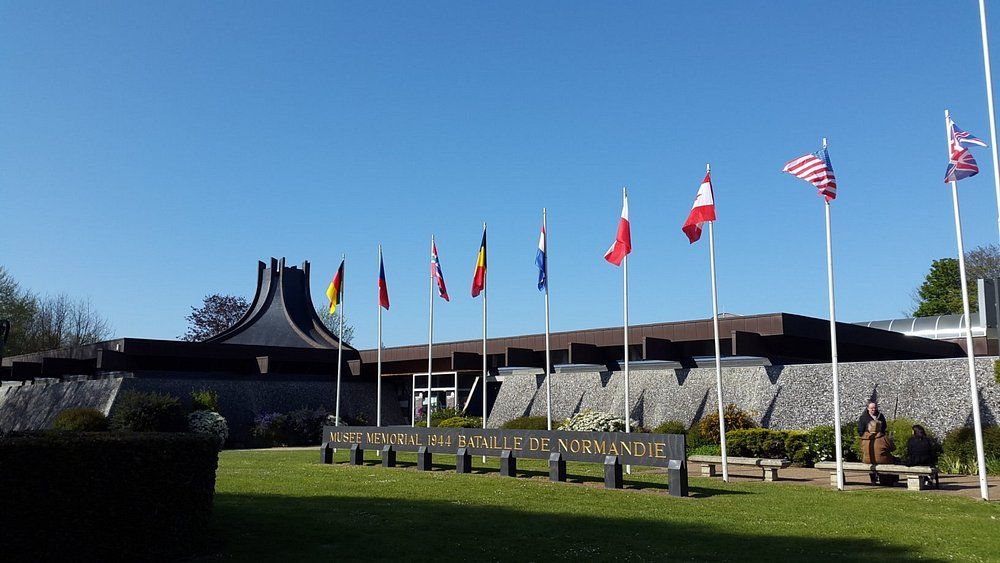
Interactive displays break down the strategies that led to the liberation of Normandy. Audio guides are available in several languages.
The museum hosts special programs on key anniversaries and refreshes its exhibits regularly with new finds and research.
Find the perfect base for exploring Utah Beach, Pointe du Hoc, and beyond.
Visiting War Cemeteries and Remembrance Sites
Normandy’s war cemeteries offer places to honor those lost during the D-Day landings and battles that followed. These meticulously kept sites let visitors reflect on the human cost of war and pay their respects.
American Cemetery
The Normandy American Cemetery sits above Omaha Beach in Colleville-sur-Mer. Spanning 172 acres, it holds the graves of 9,388 American soldiers from the D-Day operations and following battles.
It’s open daily from 9:00 AM to 5:00 PM. Most people spend an hour or two here.
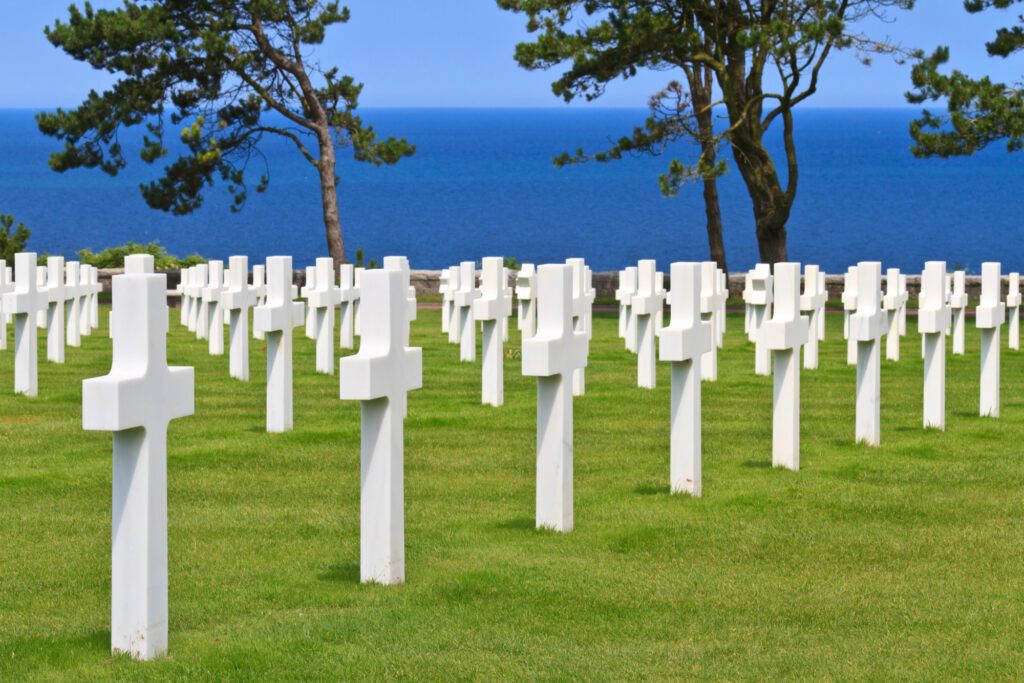
Start at the visitor center for stories, photos, and artifacts about those buried here. The rows of white marble crosses and Stars of David are a powerful sight, and the Walls of the Missing bear the names of 1,557 soldiers still unaccounted for.
Check out the reflecting pool and the bronze statue “Spirit of American Youth.”
Other Notable D-Day Attractions
Beyond the beaches, Normandy has other key D-Day sites that help you grasp the full scope of the invasion.
Pointe du Hoc
Pointe du Hoc is one of the most dramatic D-Day sites. U.S. Army Rangers scaled this 100-foot cliff on June 6, 1944, to destroy German artillery threatening Utah and Omaha beaches.
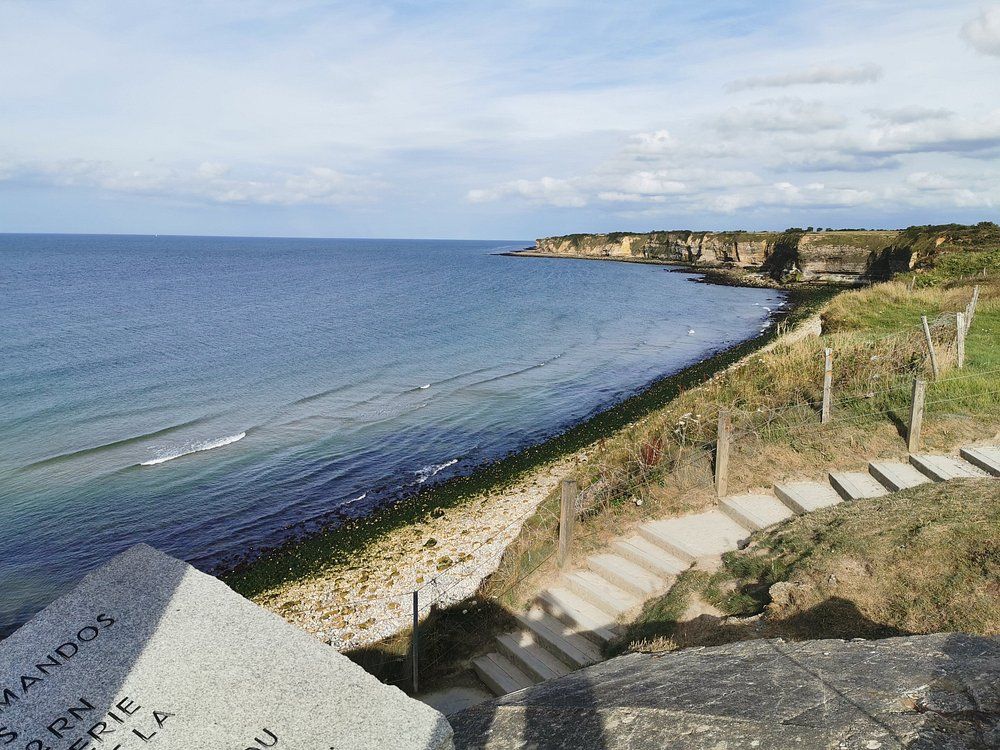
Today, you can wander among massive bomb craters—some almost 10 feet deep—that pock the ground. The German bunkers and gun emplacements are mostly intact, so you can see the defenses up close. The visitor center provides exhibits and photos of the Rangers’ climb.
The site remains largely unchanged since 1944, giving it a raw, sobering atmosphere.
Longues-sur-Mer German Gun Battery
Longues-sur-Mer is the only German coastal battery on the D-Day landing zone with its original guns still in place. Located between Gold and Omaha beaches, it was a key part of the Atlantic Wall.
Four concrete casemates house 155mm guns that could hit targets 12 miles away. The command post at the cliff’s edge gave German officers a clear view of the Channel.
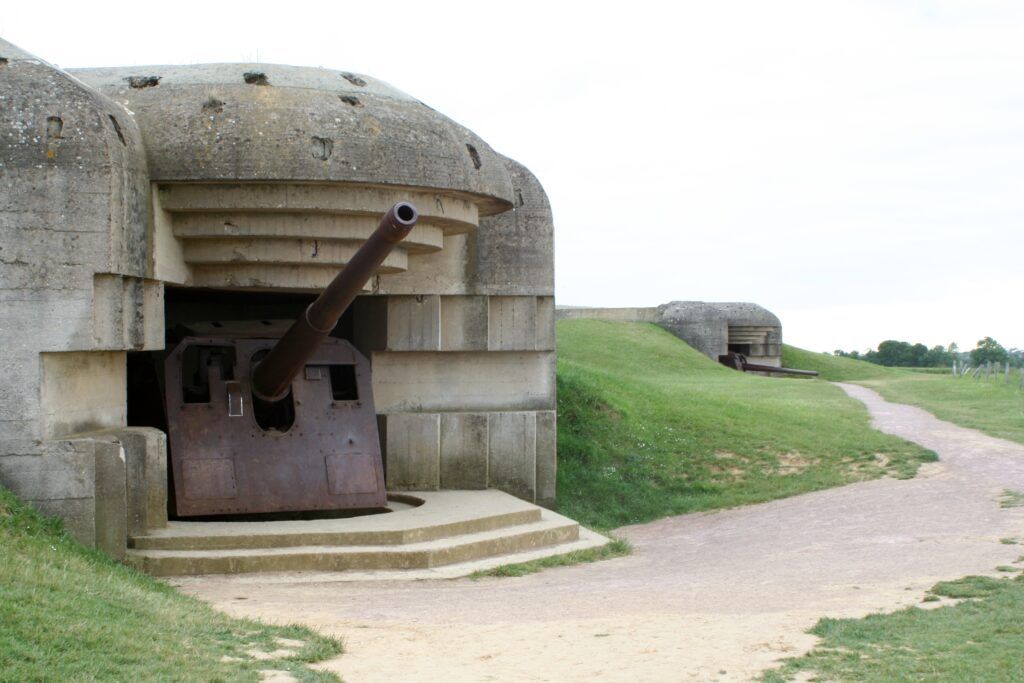
Allied bombers hit this site hard, but the guns kept firing on D-Day until Allied naval guns finally silenced them.
You can explore both the casemates and command post—rarely do you get to see German defenses so well preserved.
Arromanches and the Mulberry Harbours
Arromanches shows off Allied engineering with the remains of the Mulberry harbour. The Allies needed a port to supply their invasion, so they built prefabricated harbours and floated them across the Channel.
At low tide, you’ll spot huge concrete caissons that formed the harbour’s breakwater. These 6,000-ton blocks were sunk to create a safe anchorage.
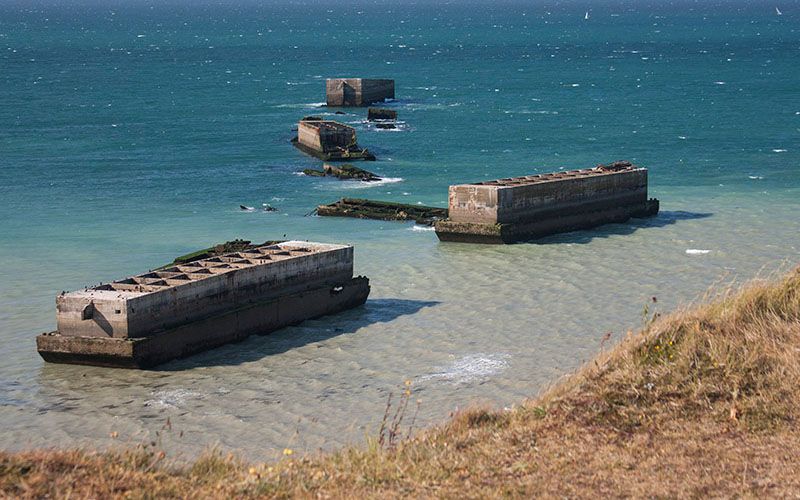
The 360° Cinema on the cliffs offers a stirring film experience, blending old and new footage of the beaches.
The local D-Day Museum uses models and dioramas to explain how the harbour worked and its vital role in bringing in over 2.5 million men, half a million vehicles, and 4 million tons of supplies.
Guided Tours and Travel Tips
If you want to get the most out of D-Day sites around Caen, planning ahead and tapping into local expertise makes a world of difference. Guided tours often provide richer context and handle the tricky logistics between sites.
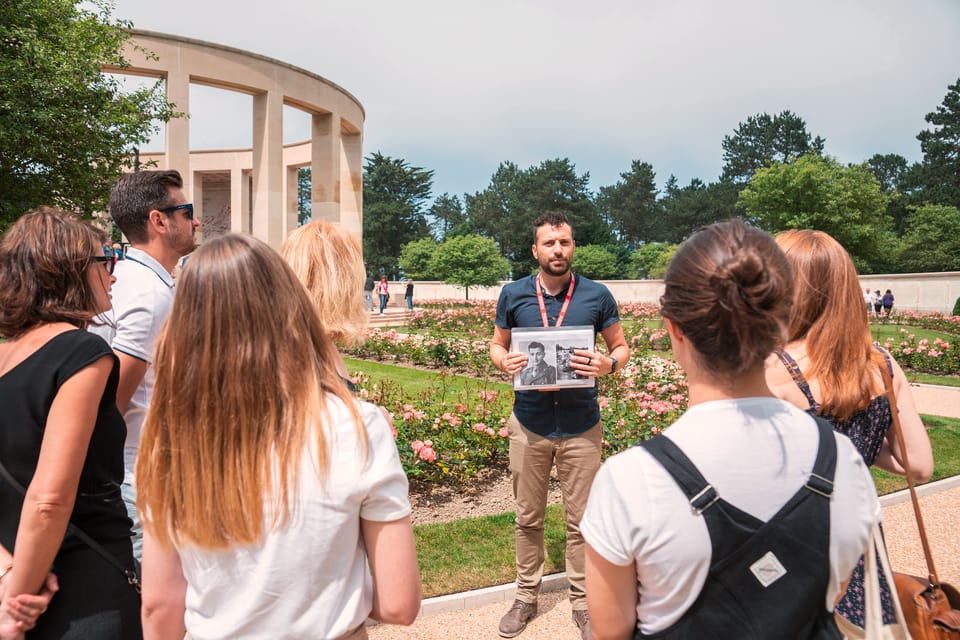
Booking a Guided Tour
Private licensed guides in Caen offer tailored D-Day tours with transportation included. They’re flexible and will shape the itinerary to fit your interests and schedule.
When booking, think about:
- Tour duration: Half-day tours (4 hours) hit the highlights; full-day tours (8+ hours) go deeper
- Group size: Private tours cost more but are fully personalized; small group tours (6-12 people) strike a good balance
- Language: Make sure your guide speaks fluent English
- Starting point: Most tours leave from Caen, but some offer Paris pick-ups (about 3 hours each way)
For summer visits (June-August), especially around D-Day anniversaries, book 2-3 months in advance.
Recommended D-Day Tours:
- American D-Day Sites in Normandy Full-Day Tour
- American D-Day Sites in Normandy Half-Day Tour
- Half-Day Normandy WWII Sidecar Tour
- Full-Day US Battlefields of Normandy Tour
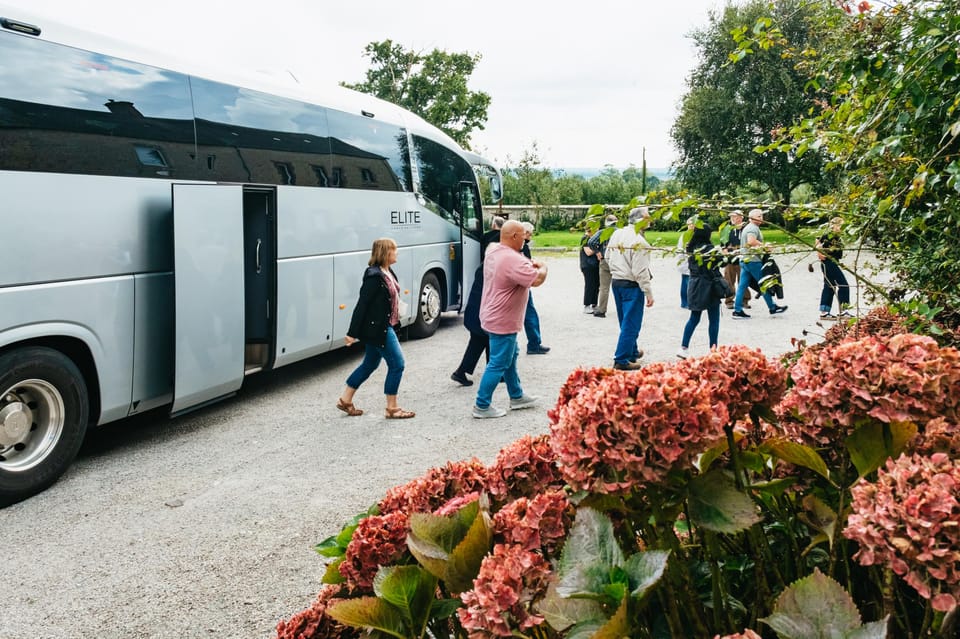
Recommended Itineraries
If you only have one day, try this:
- Morning: Caen Memorial Museum (2-3 hours)
- Afternoon: Omaha Beach and the American Cemetery (2 hours)
- Late afternoon: Either Arromanches (artificial harbor remains) or Pointe du Hoc
With two days, add in:
- British Sword Beach sector
- Juno Beach Centre (Canadian memorial)
- Other landing beaches
Bring comfy walking shoes and dress for the weather. Summer is busy but pleasant; winter is quieter but chillier and some sites close early.
Staying in Caen makes sense—it’s got good hotels, restaurants, and you can reach all D-Day sites within about 30-40 minutes by car.
Find comfortable stays within moments of historic battlegrounds
Present-Day Caen: City Life and Culture
Modern Caen blends historic sites with today’s comforts. The city keeps its connection to the past alive, but you’ll also find vibrant neighborhoods showing off both its medieval roots and post-war rebuild.
William the Conqueror Historical Sites
William the Conqueror still looms large in Caen’s identity. His Château de Caen, built around 1060, dominates the city center and now houses both the Museum of Normandy and the Museum of Fine Arts.
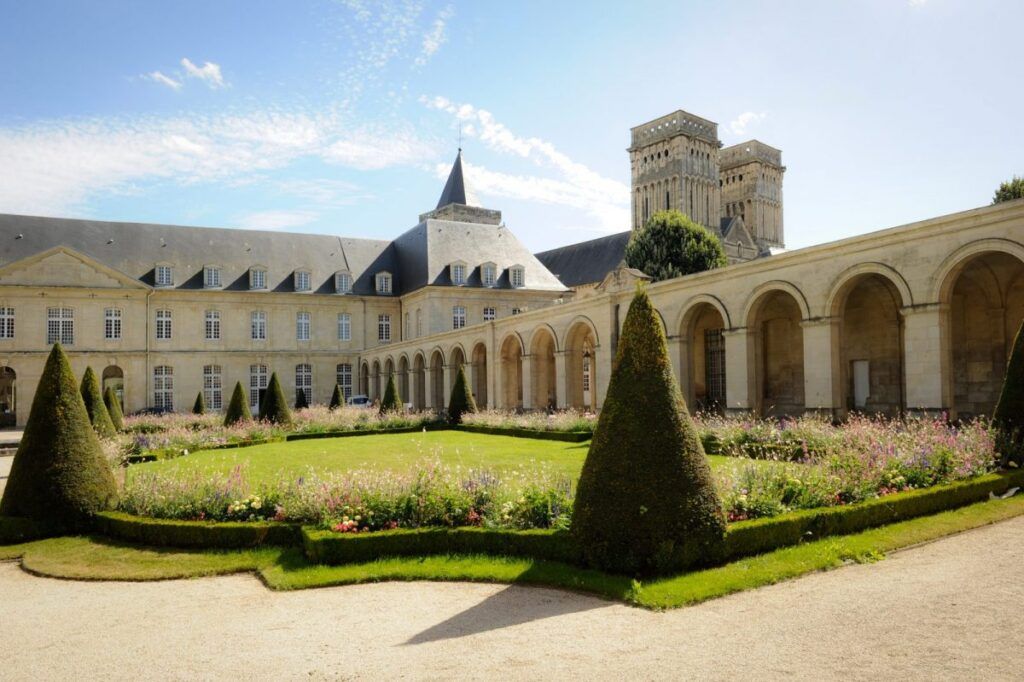
The Men’s Abbey (Abbaye aux Hommes) and Women’s Abbey (Abbaye aux Dames), founded by William and his wife Matilda, are stunning examples of Norman Romanesque design. The Men’s Abbey serves as City Hall but still feels grand and historic.
You can explore these sites on foot. Many people start at the castle and follow marked trails to the abbeys. In summer, the castle grounds come alive with outdoor concerts and events.
Saint-Sauveur District
The Saint-Sauveur district is the lively core of Caen. The Church of Saint-Sauveur, dating to the 14th century, survived WWII bombings and anchors the area.
Surrounding the church, you’ll find bustling cafés, restaurants, and boutiques. On Fridays, Place Saint-Sauveur fills with a market selling everything from fresh produce to regional cheeses.
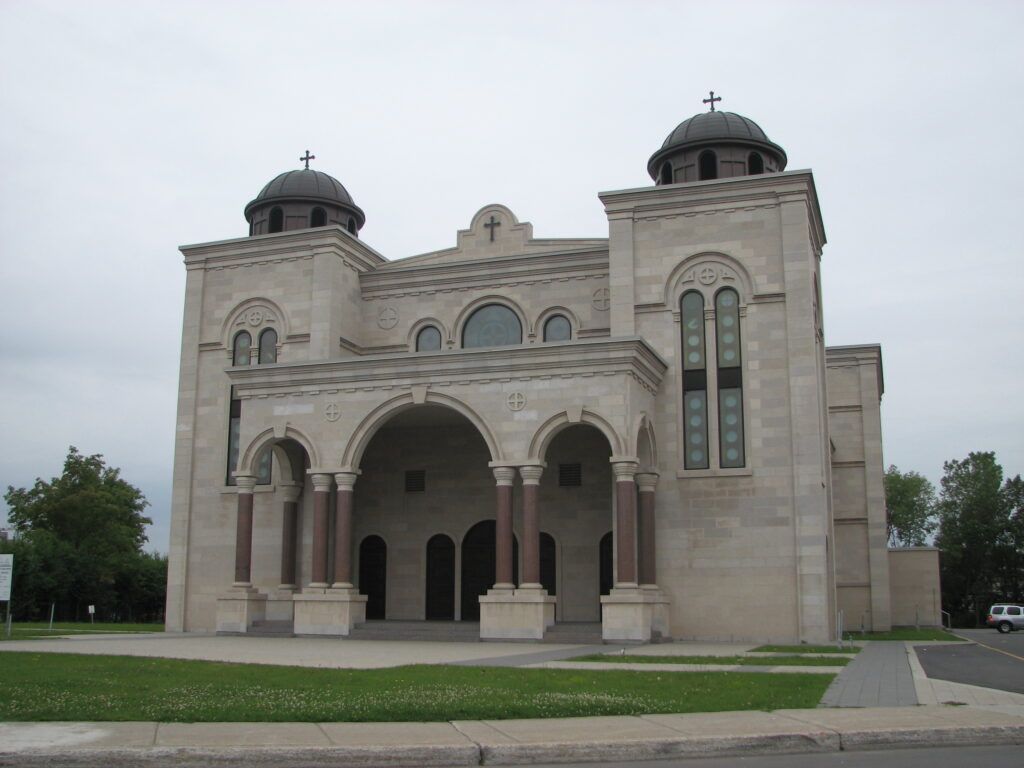
The district is a patchwork of post-war and medieval architecture—half-timbered houses sit right next to modern buildings. Street musicians often play here, especially in summer. For the best vibe, swing by late afternoon when locals are winding down their workday.
Local Cuisine and Dining
Caen’s food scene is a treat for anyone who loves Normandy’s culinary traditions. Local restaurants serve up classic Norman recipes, fresh seafood, and farm-to-table dishes that show off the region’s bounty.
Top Restaurants in Caen
A la Table de Guillaume dishes out authentic Norman cuisine in a historic spot near the castle. Seasonal ingredients are the star, and a full meal runs €25-40.
Le Bouchon du Vaugueux sits in the atmospheric Vaugueux quarter. It’s cozy and serves French classics with a Norman twist—don’t skip their apple desserts.
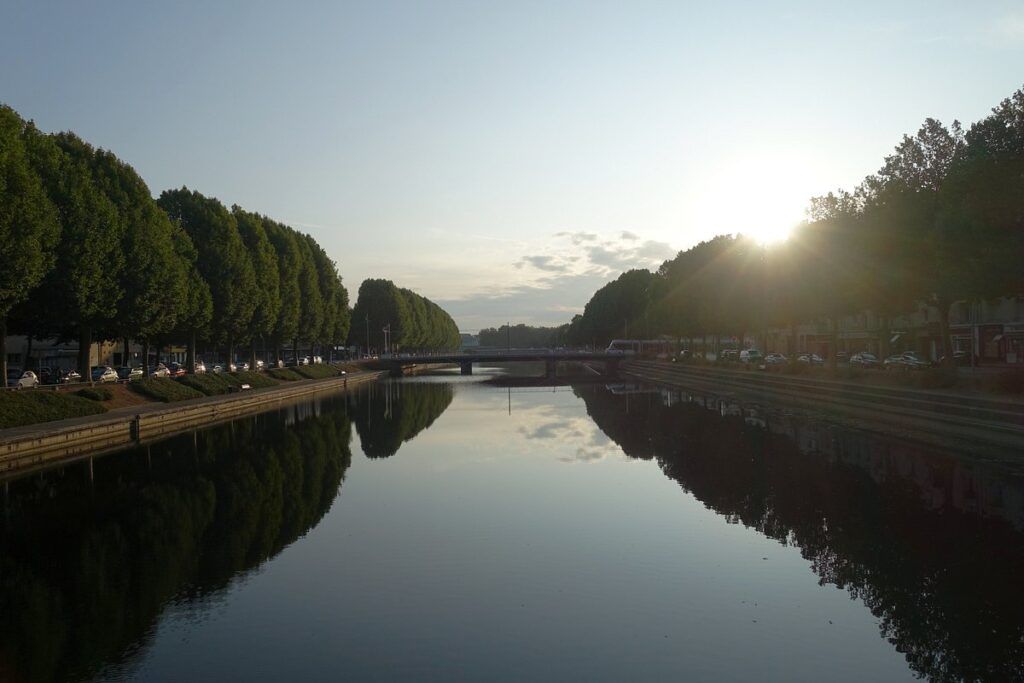
L’Initial is a bit more upscale, with inventive takes on regional dishes. The chef emphasizes fresh seafood from nearby ports.
La Couronne offers casual dining at fair prices. Their three-course lunch (€18) is a local favorite.
For a quick bite, Café Mancel inside Caen Castle has great views and good food.
Normandy Gastronomy
Normandy’s cuisine revolves around apples, dairy, seafood, and local meats. These flavors pop up everywhere in Caen’s menus.
Cheeses like Camembert, Livarot, Pont-l’Évêque, and Neufchâtel are must-tries—many places offer tasting plates.
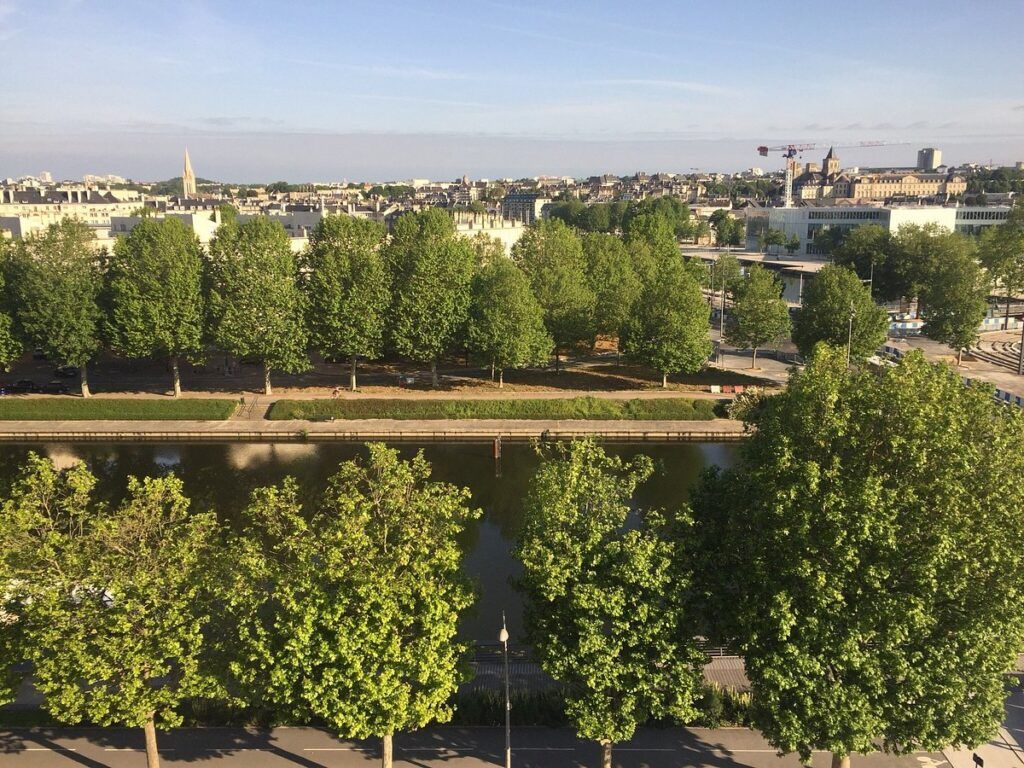
Seafood is abundant, especially:
- Moules marinières (mussels)
- Fresh oysters from the coast
- Coquilles Saint-Jacques (scallops)
Apple-based foods and drinks are everywhere:
- Cidre (hard cider), both dry and sweet
- Calvados (apple brandy), typically as a digestif
- Tarte aux pommes (apple tart), often caramelized
If you’re feeling adventurous, try “poulet à la normande” (chicken with apples and cream) or “tripe à la mode de Caen” (a slow-cooked tripe dish unique to the city).
Accommodation and Visitor Practicalities
Planning your Caen trip takes a bit of forethought for a smooth D-Day adventure. Picking the right place to stay and knowing your transport options will make all the difference.
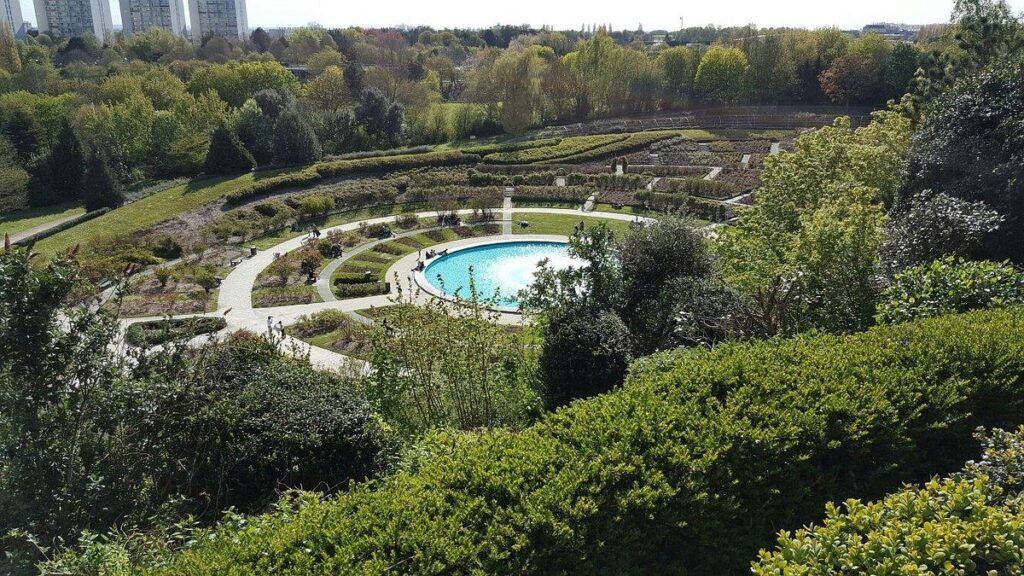
Where to Stay in Caen and Surrounding Areas
Caen has accommodations for every budget. The city center has several mid-range hotels close to major sights like the Memorial Museum. Many travelers stay near Port de Plaisance for modern hotels and easy parking.
For a more personal touch, check out the small bed and breakfasts (chambres d’hôtes) in the historic quarter. You’ll often get insider tips you won’t find elsewhere.
During peak season (June-August), book two or three months ahead—especially around D-Day anniversaries, when rooms go fast.
Recommended Hotels in Caen:
- Hôtel des Quatrans
- Best Western Plus Le Moderne
- Mercure Caen Centre Port de Plaisance
- Ibis Styles Caen Centre Gare
- Hôtel Restaurant Ivan Vautier
Budget travelers might look at the university area, which offers lower prices and good public transport links.
Check available accommodations in Caen.
Transportation and Accessibility
Getting around Caen and to the D-Day beaches is pretty straightforward. The Twisto bus system connects main sights and the train station. Single tickets are about €1.50, with day passes around €4.
For hitting multiple beaches, your options include:
- Rental cars (most convenient, from €40/day)
- Guided tours (€60-100 per person, transport and commentary included)
- Public buses (cheaper at €2-5 per trip, but limited schedules)
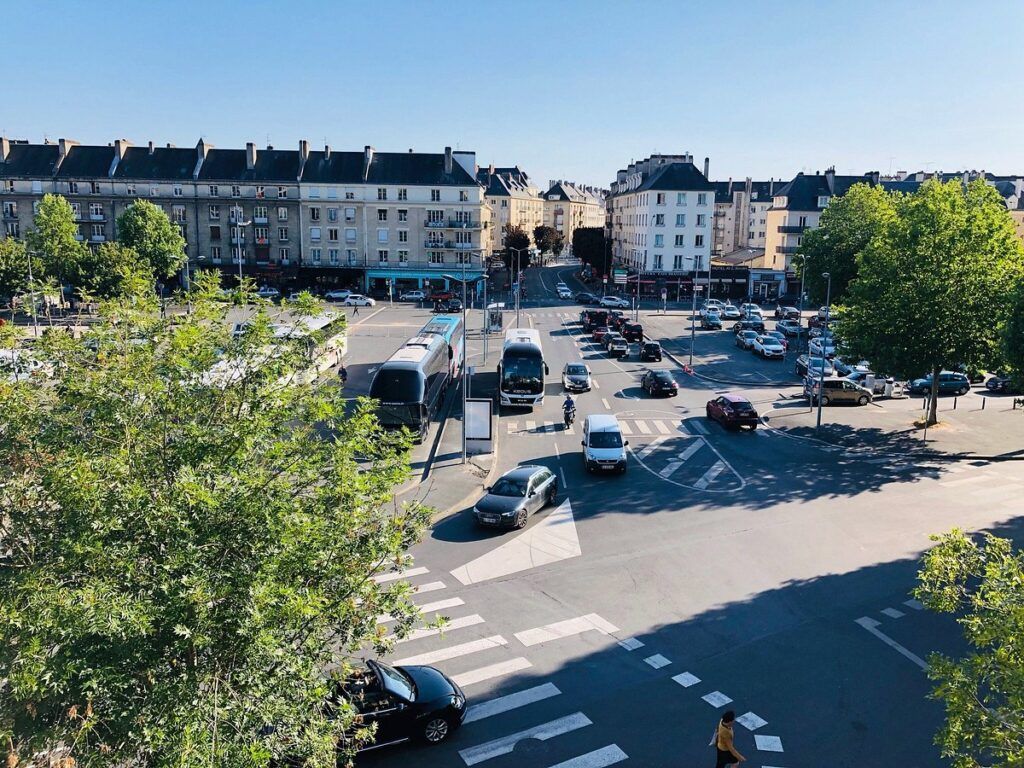
The Memorial Museum runs shuttles to Omaha Beach and other D-Day sites in summer, departing at 8:30 AM and returning by 6:00 PM.
Bikes are a fun, eco-friendly way to see the city—many hotels offer storage, and there are plenty of bike paths.
Check available accommodations in Caen.
Nearby Excursions from Caen
Caen is a handy base for day trips to other key Normandy sites. These excursions give you a deeper look at both medieval and WWII history.
Bayeux and the Tapestry
Bayeux is just a 30-minute drive or train ride west of Caen. The town survived WWII mostly untouched, so its medieval streets and charm are intact.
The big draw is the Bayeux Tapestry, a 70-meter embroidered masterpiece from the 11th century. It tells William the Conqueror’s story in 58 scenes. Audio guides are available in several languages.
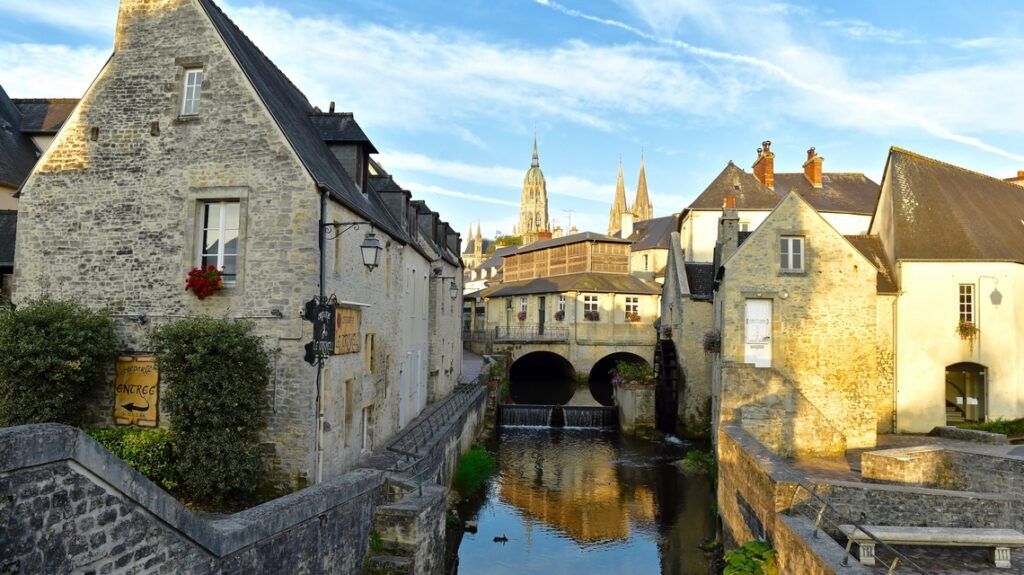
While you’re there, check out the Cathedral of Notre-Dame—gorgeous Norman-Gothic architecture. The Bayeux War Cemetery is also worth a visit; it’s the largest British WWII cemetery in France with over 4,000 graves.
Many D-Day tours leave from Bayeux, making it easy to visit Omaha and Gold beaches.
Airborne Museum
The Airborne Museum in Sainte-Mère-Église is about an hour from Caen by car. This town was among the first liberated on D-Day and features in the film “The Longest Day.”
The museum honors American paratroopers of the 82nd and 101st Airborne, with artifacts including a real C-47 aircraft and a Waco glider.
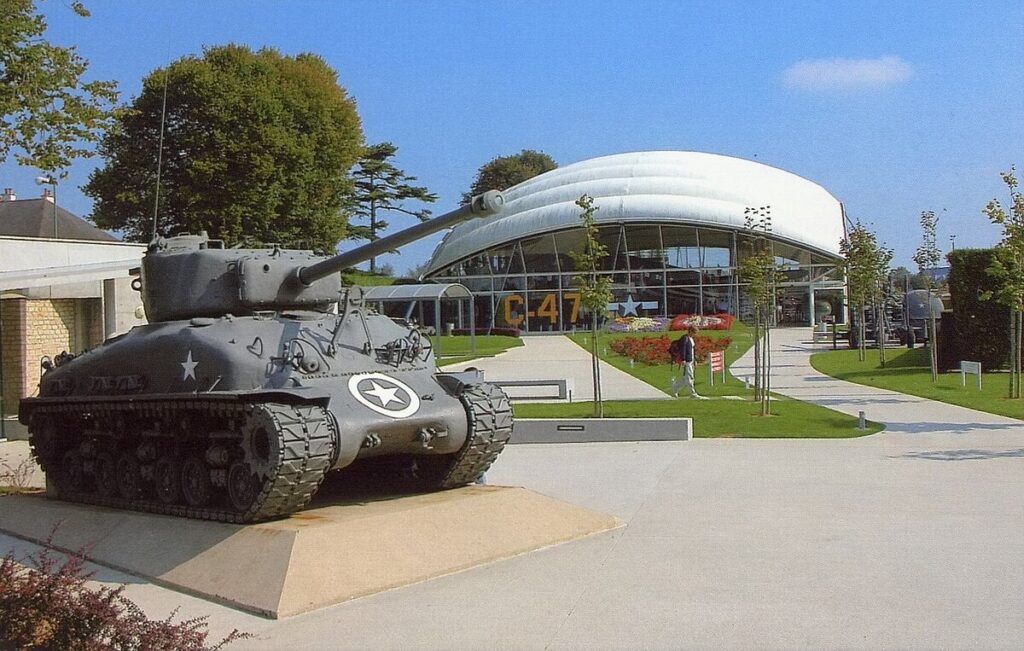
Don’t miss the church where John Steele’s parachute got snagged on the steeple—a mannequin still hangs there as a tribute.
The museum’s immersive exhibits use technology to drop you into the paratrooper experience, giving you a real sense of what those first hours of Operation Overlord were like.
From beachfront hotels to authentic French countryside stays. No booking fees.

